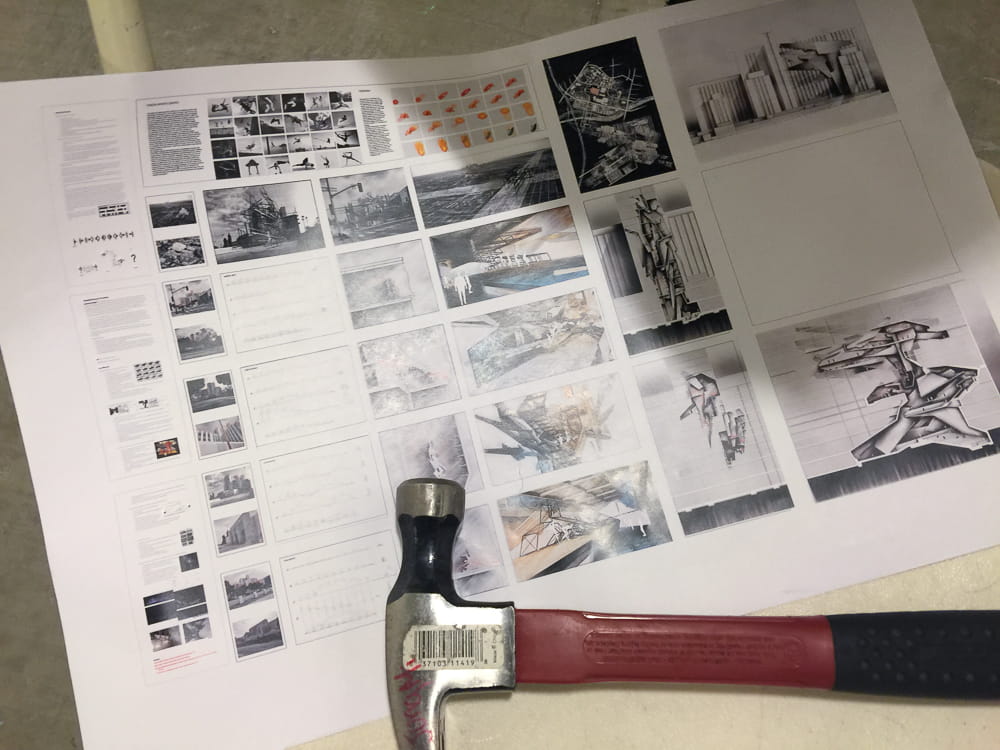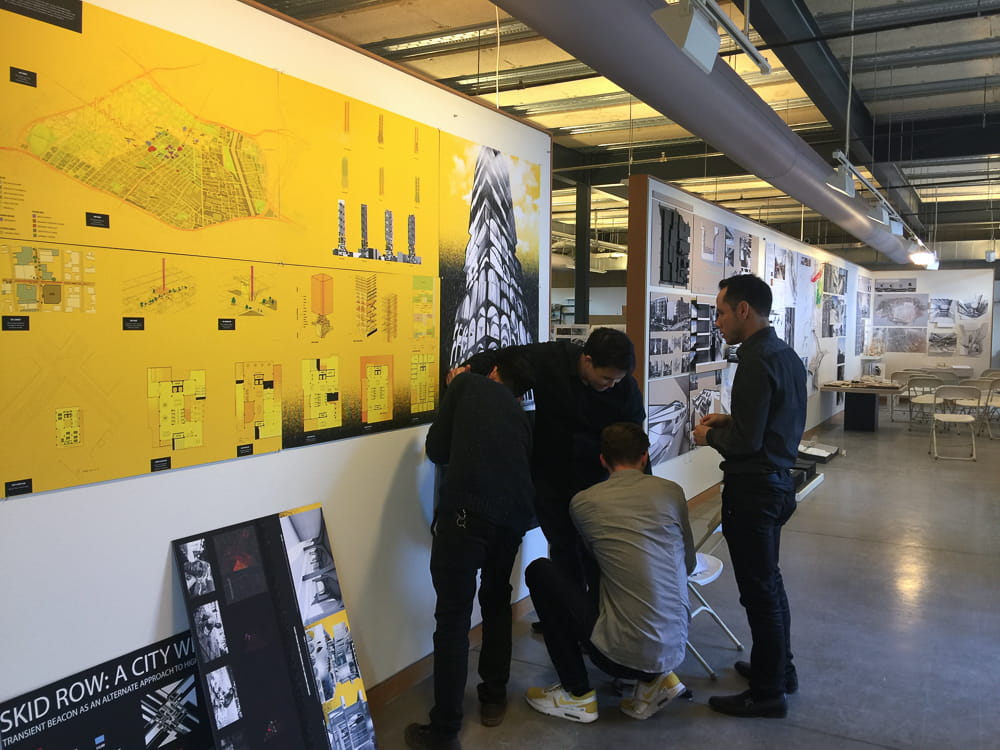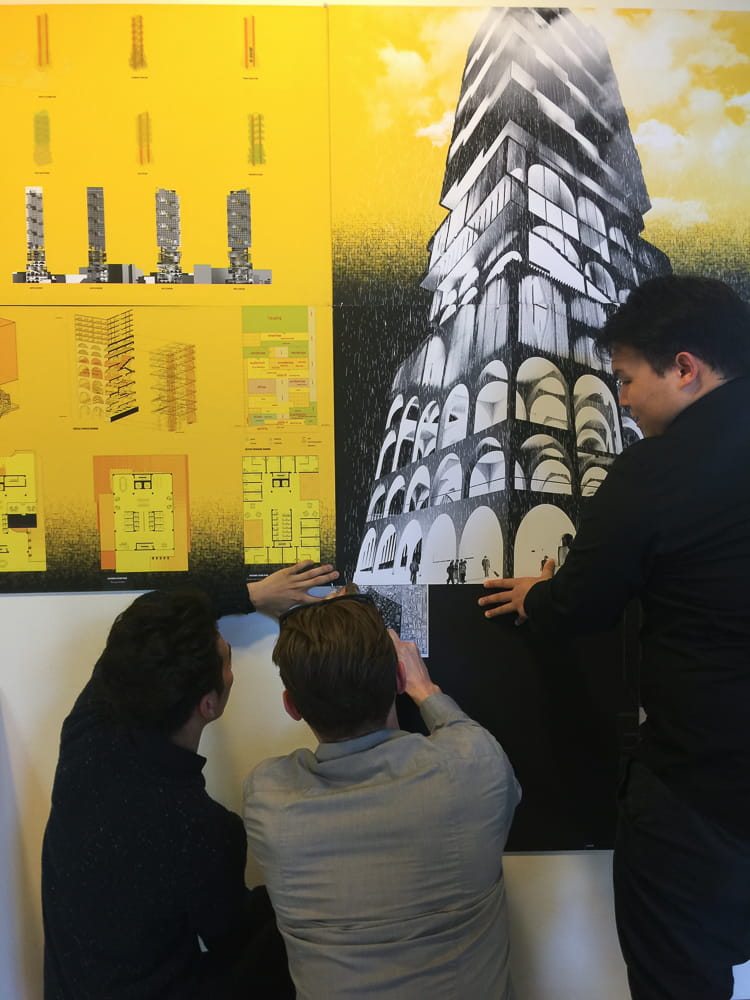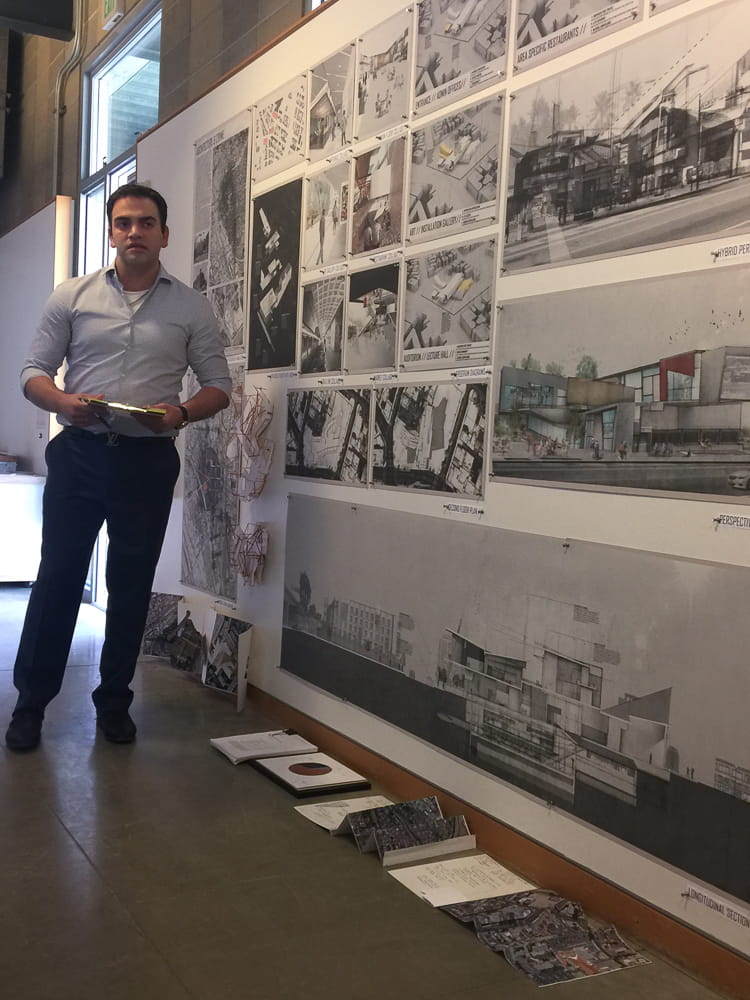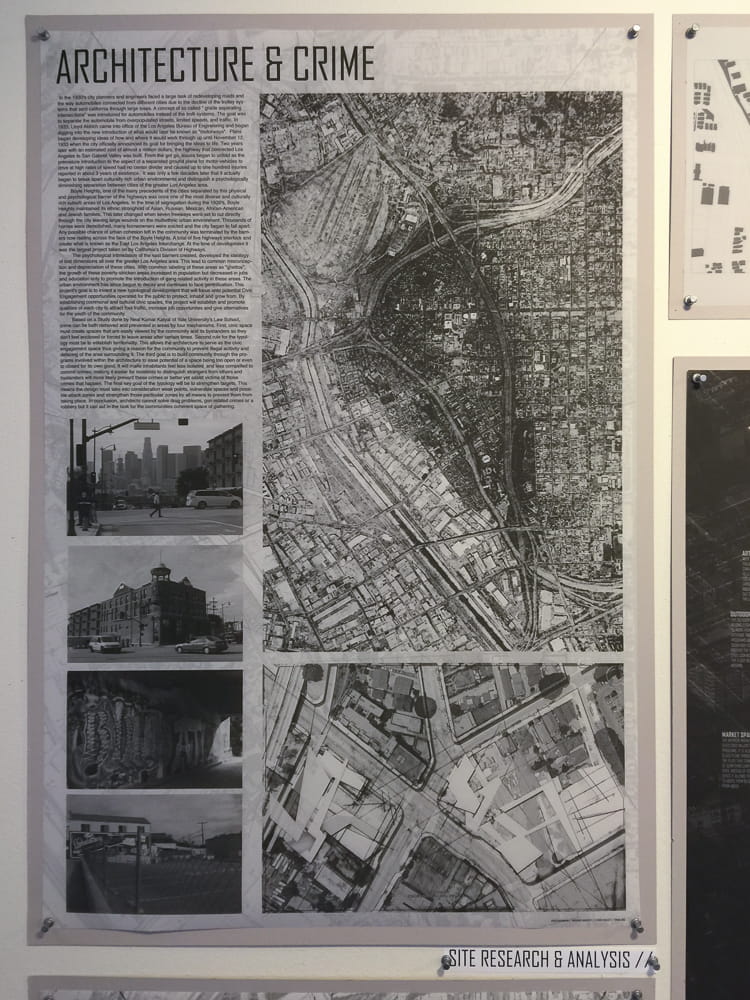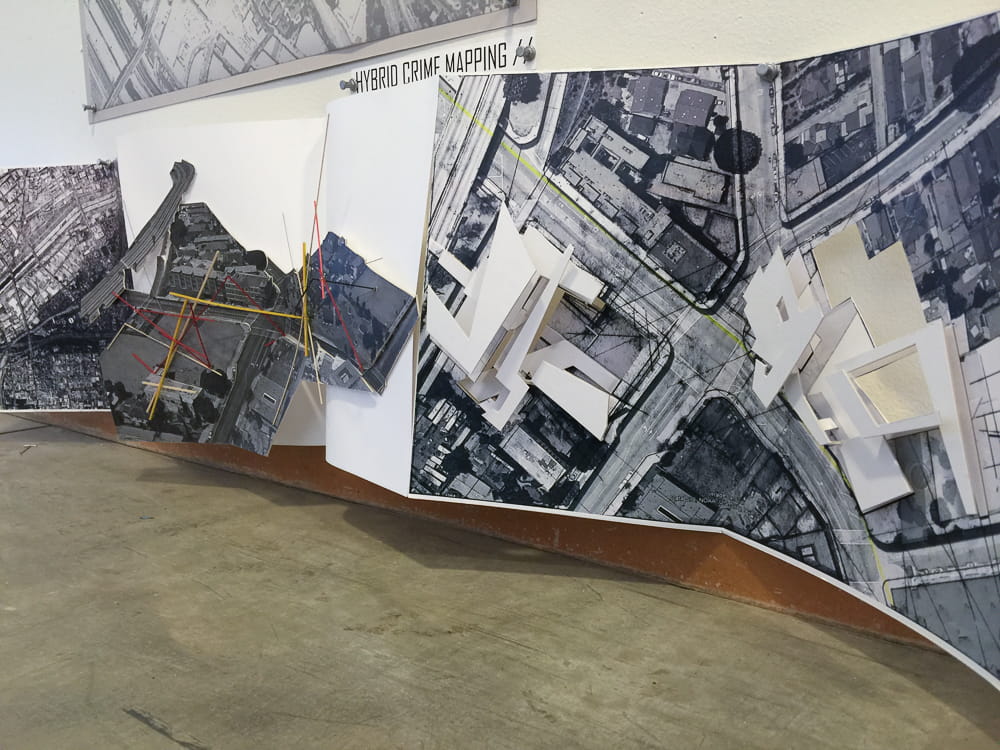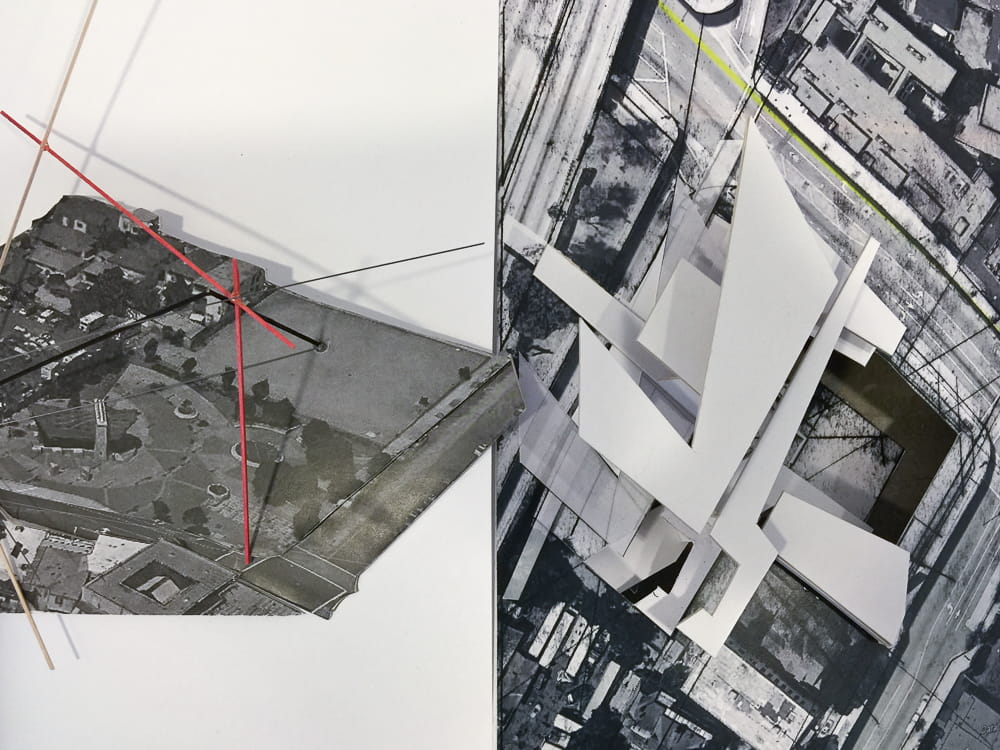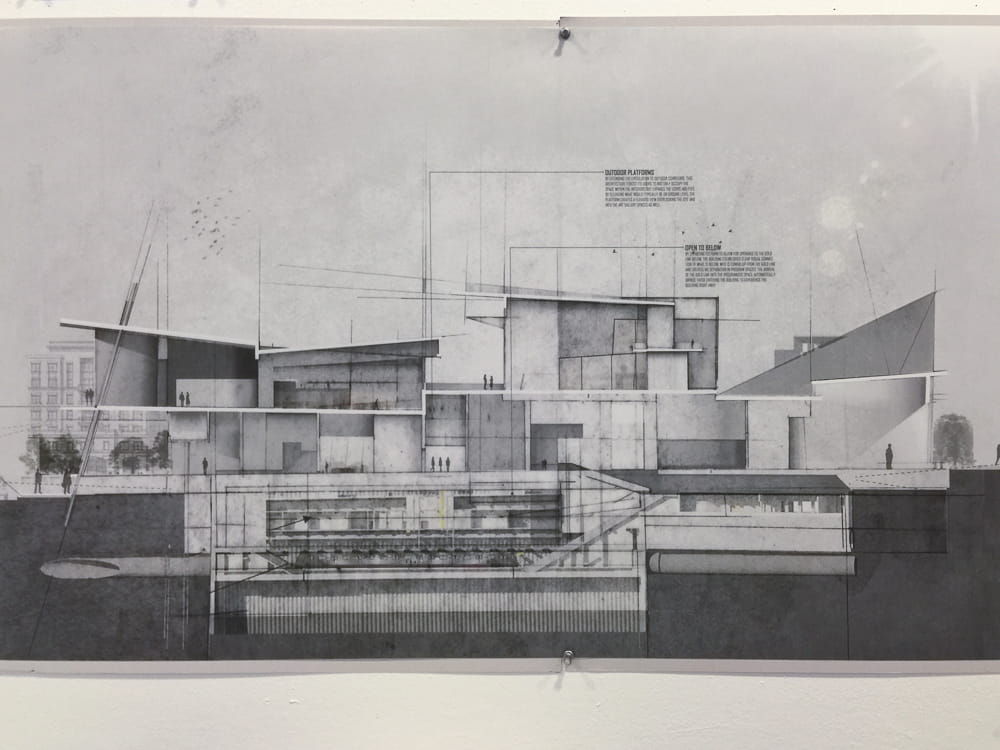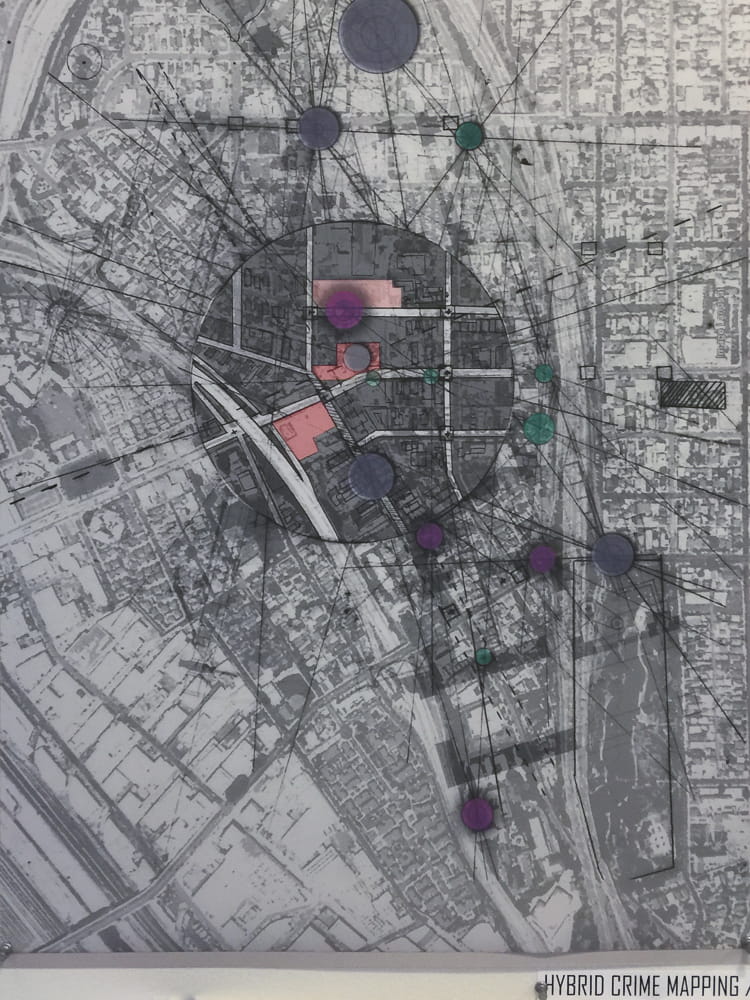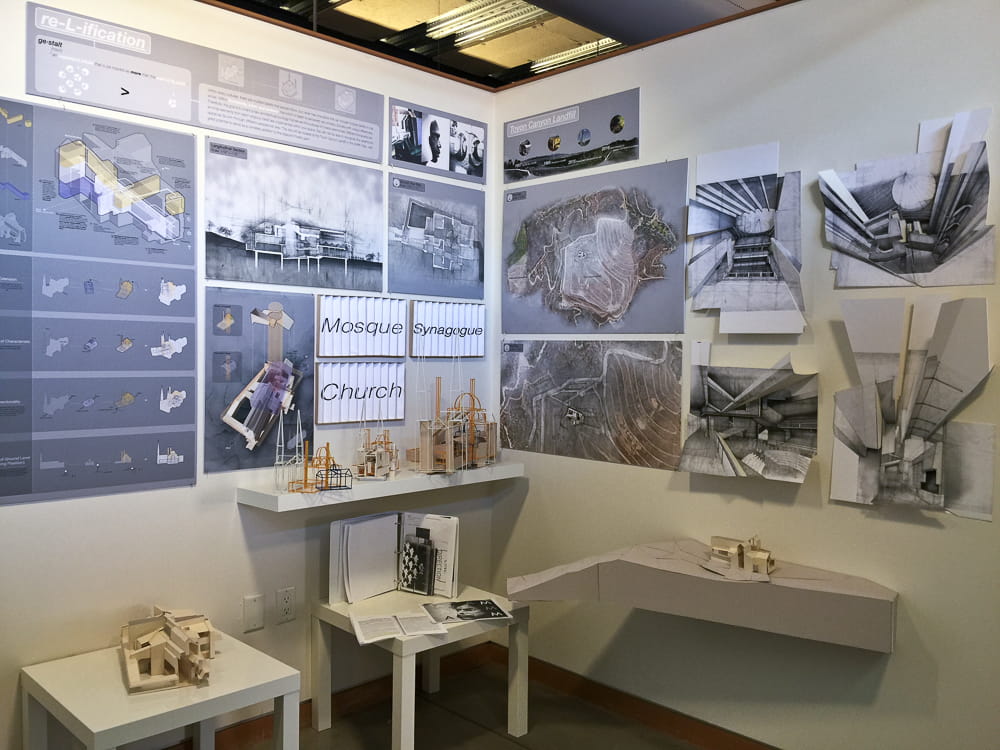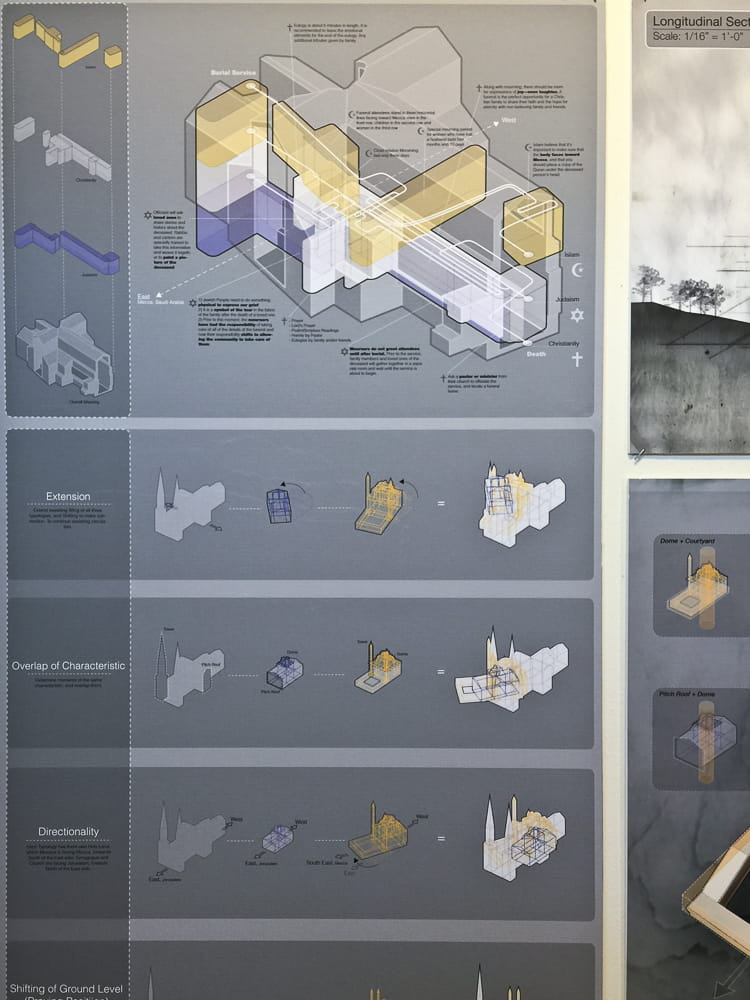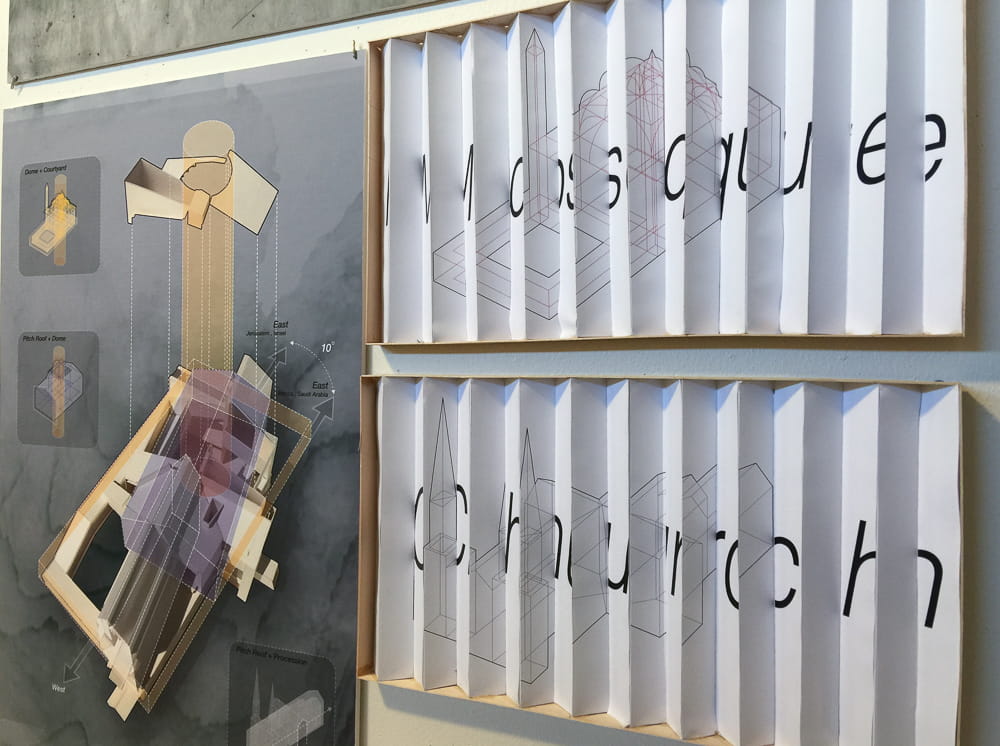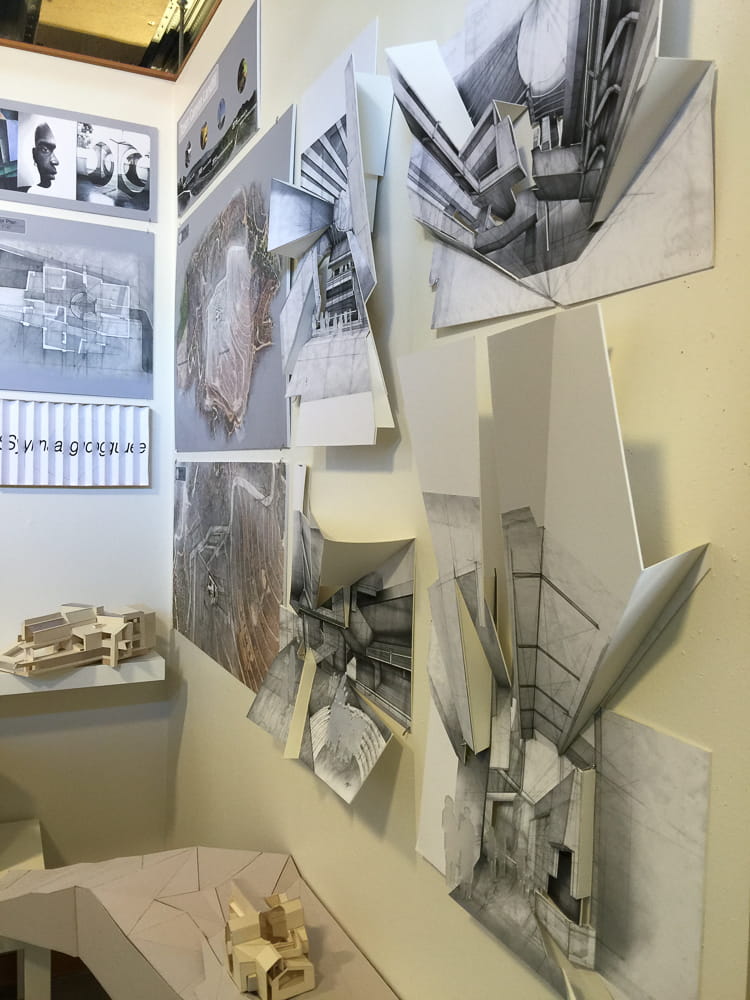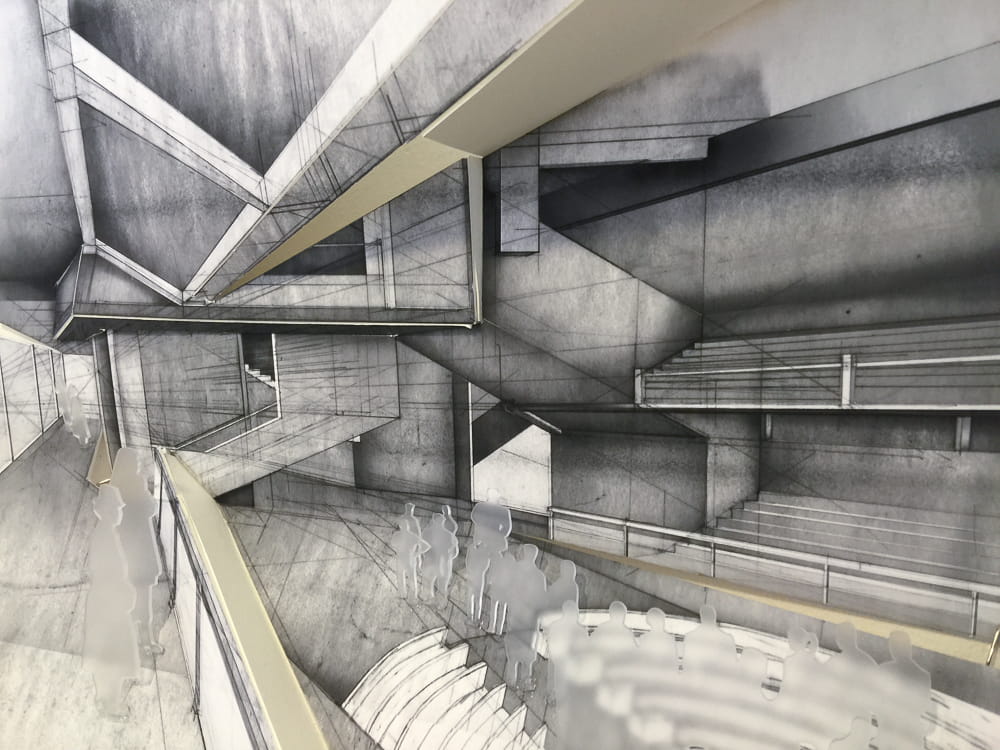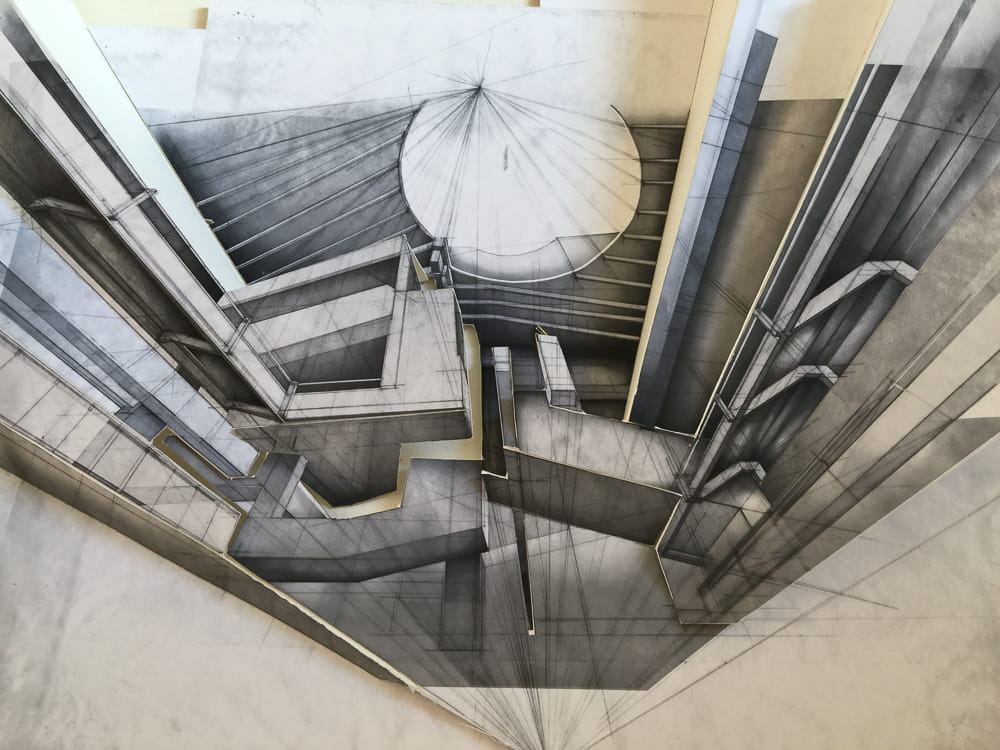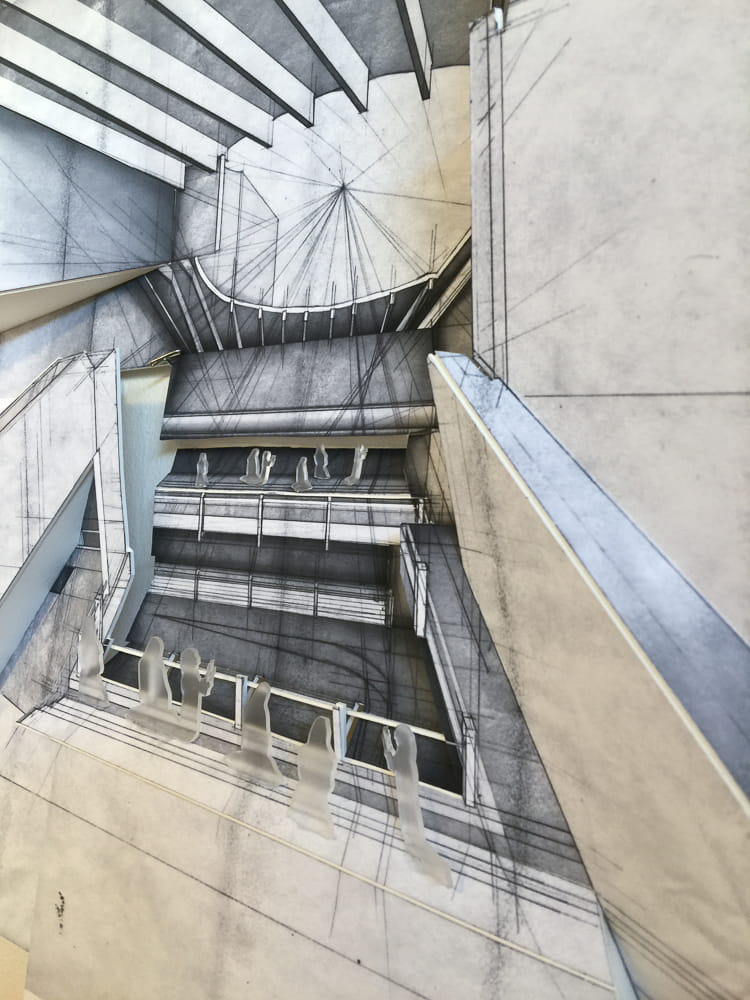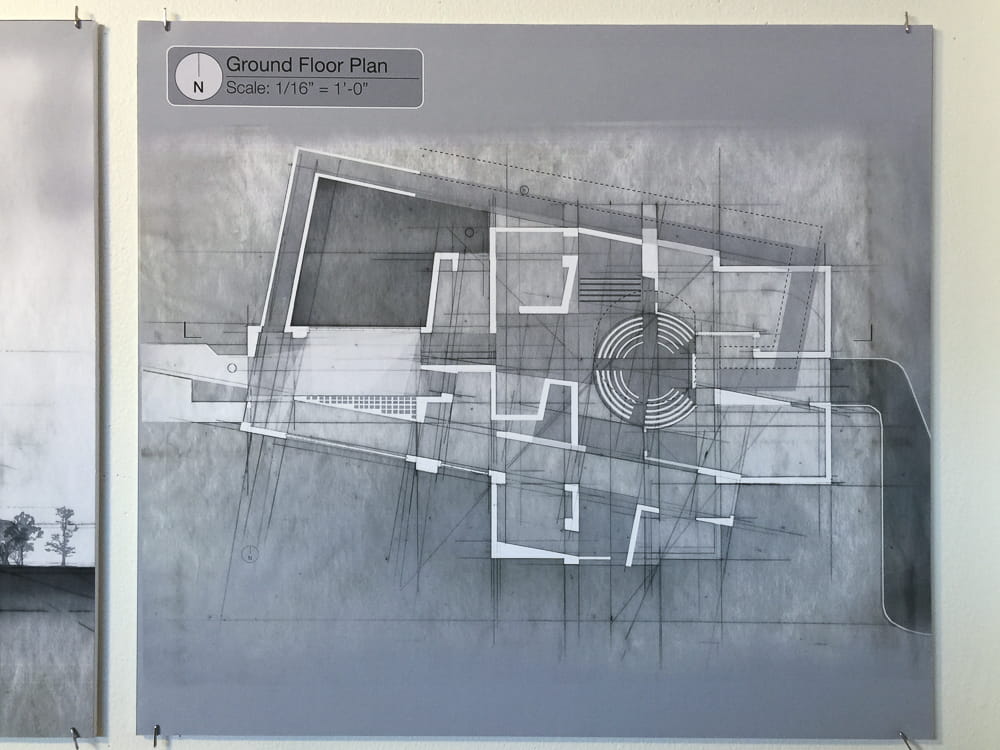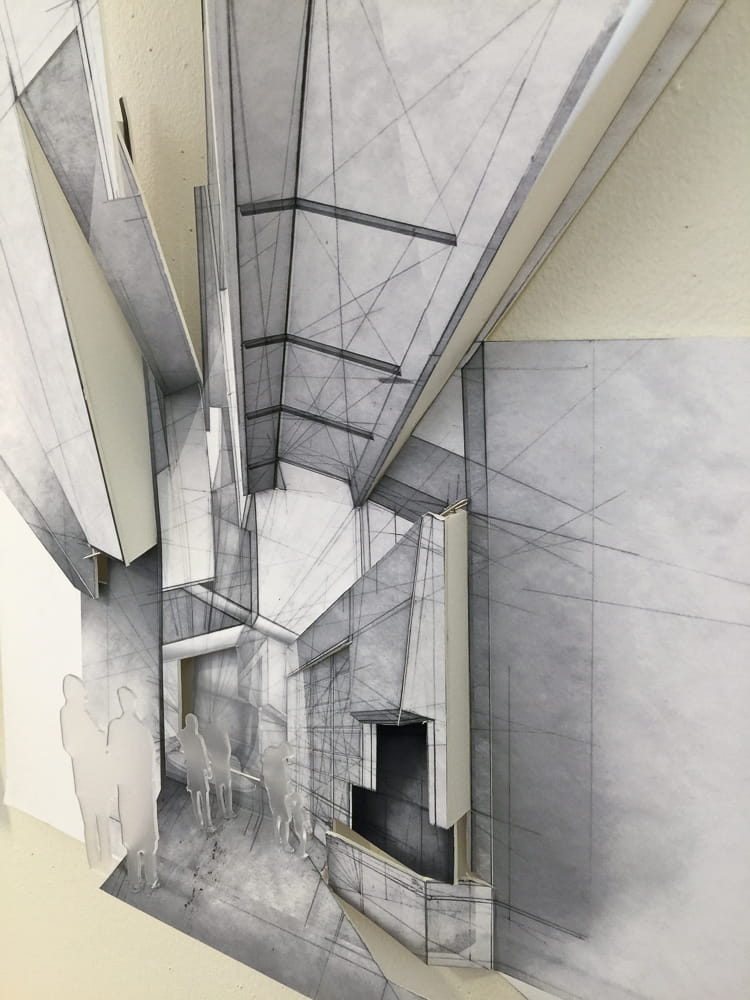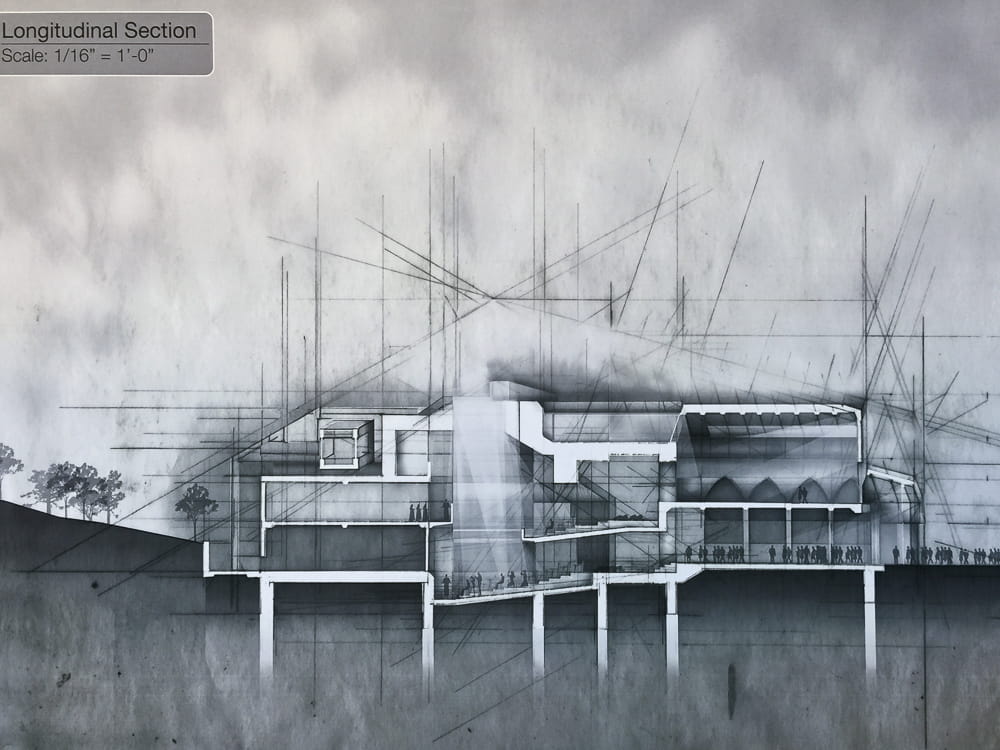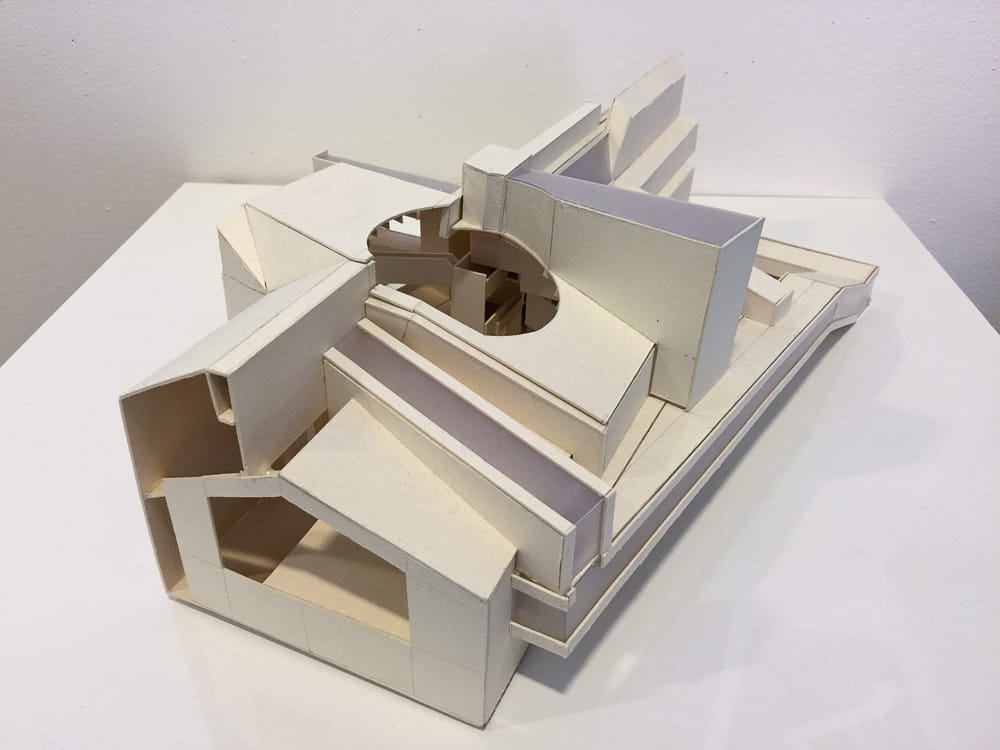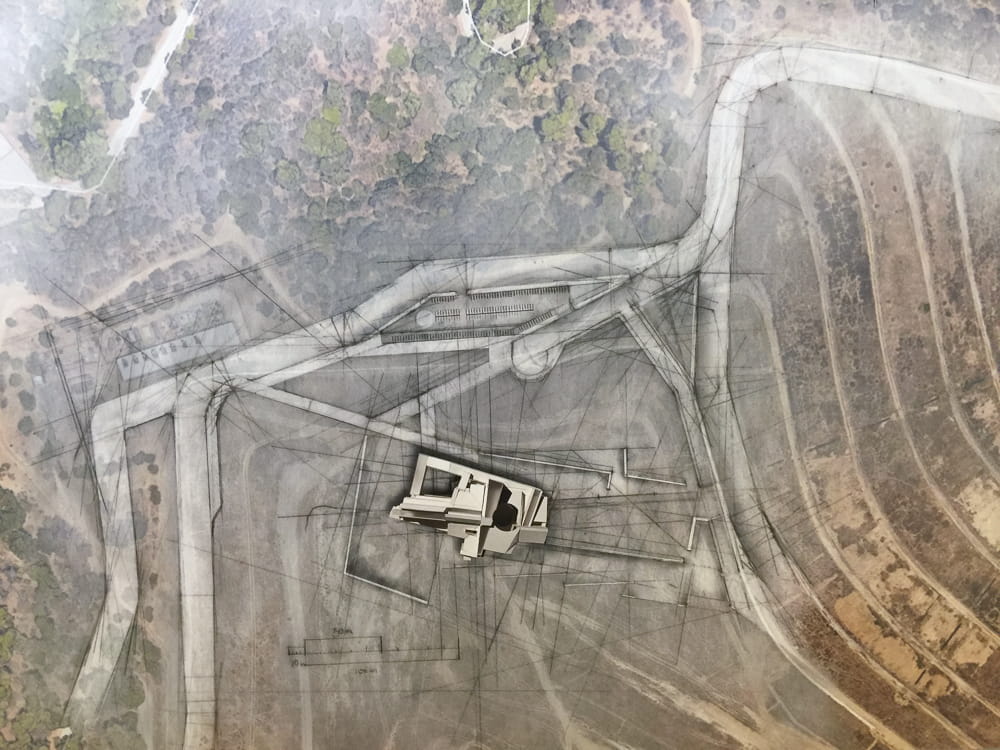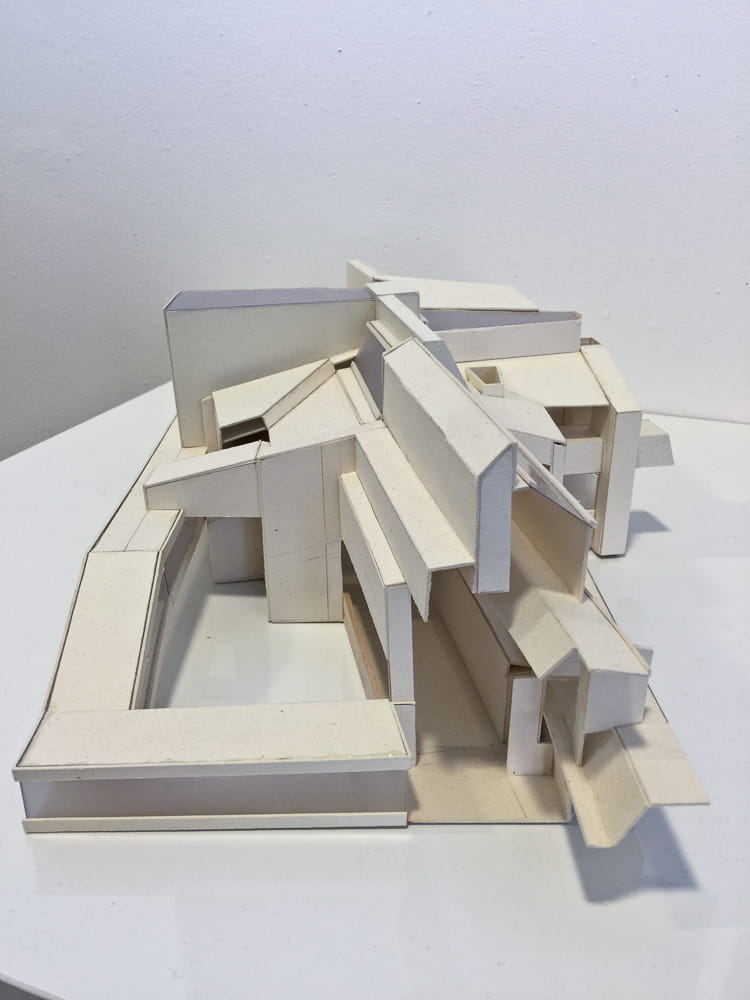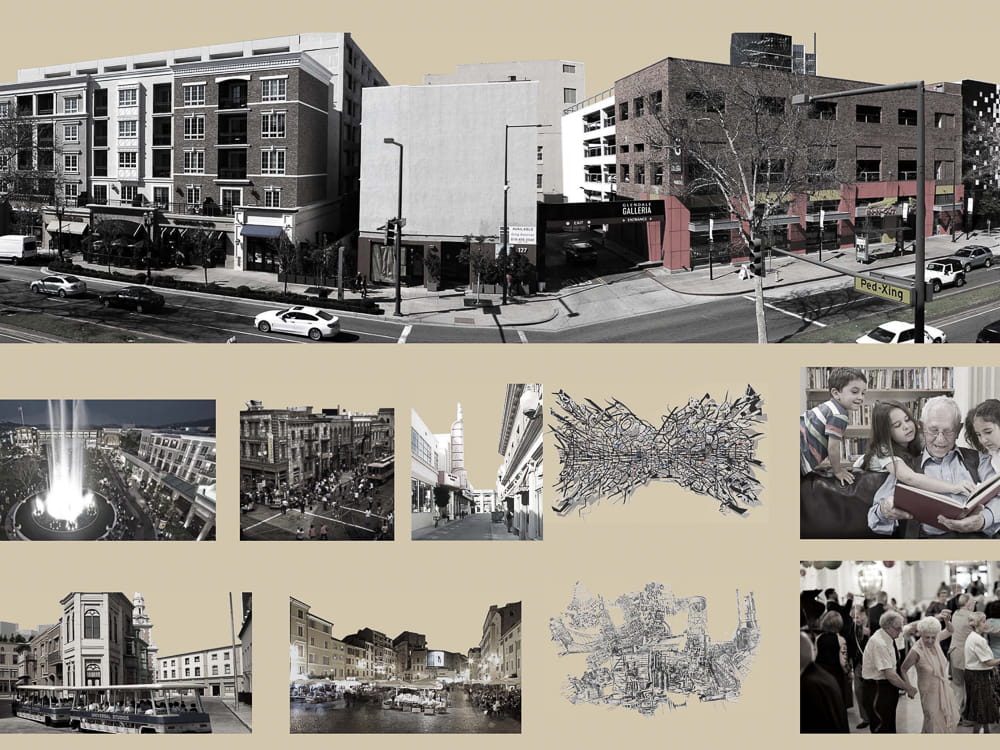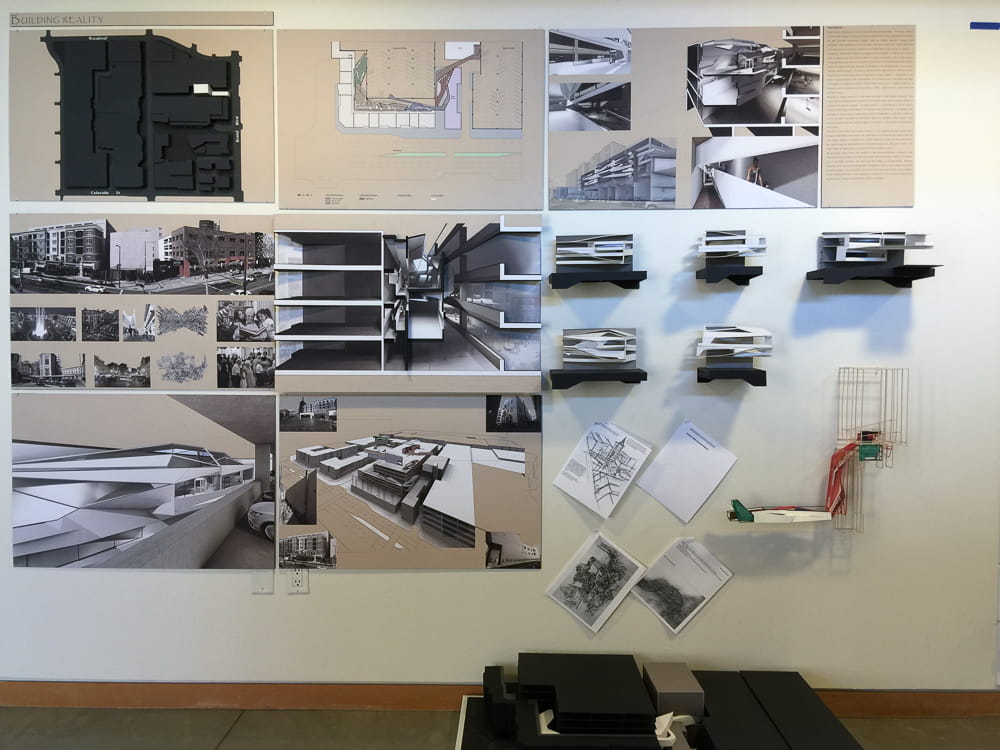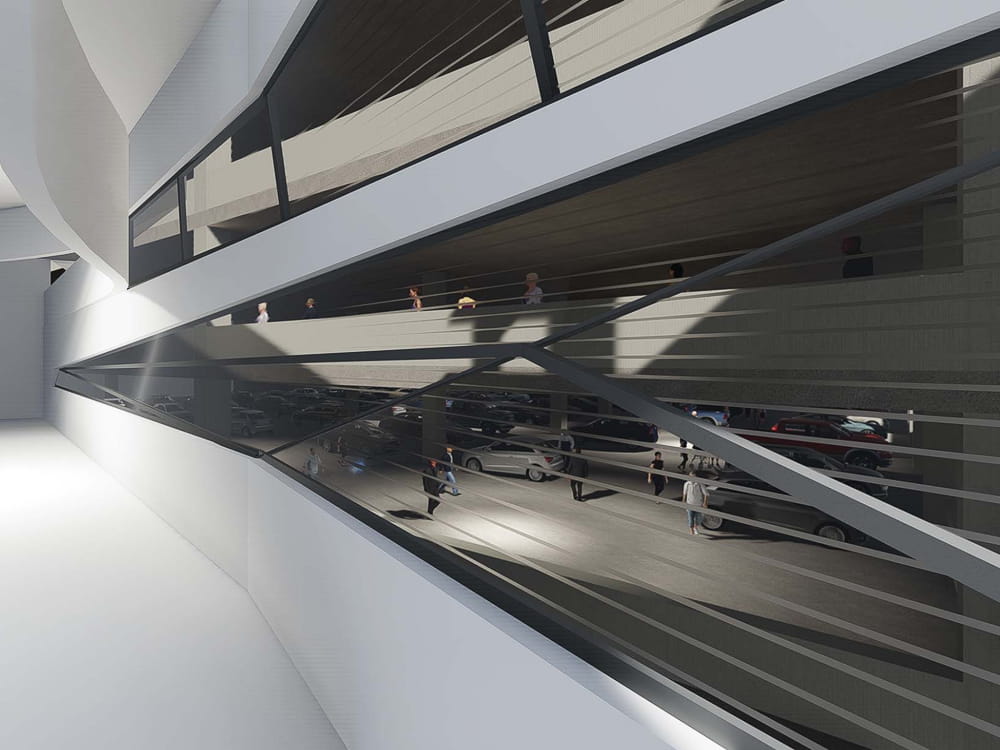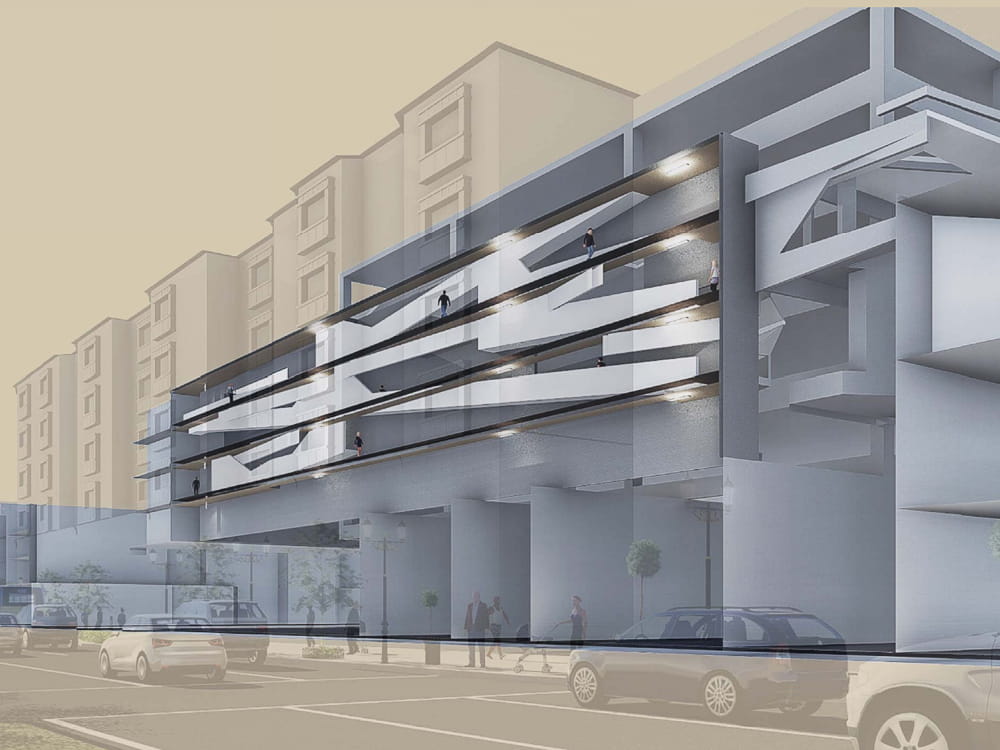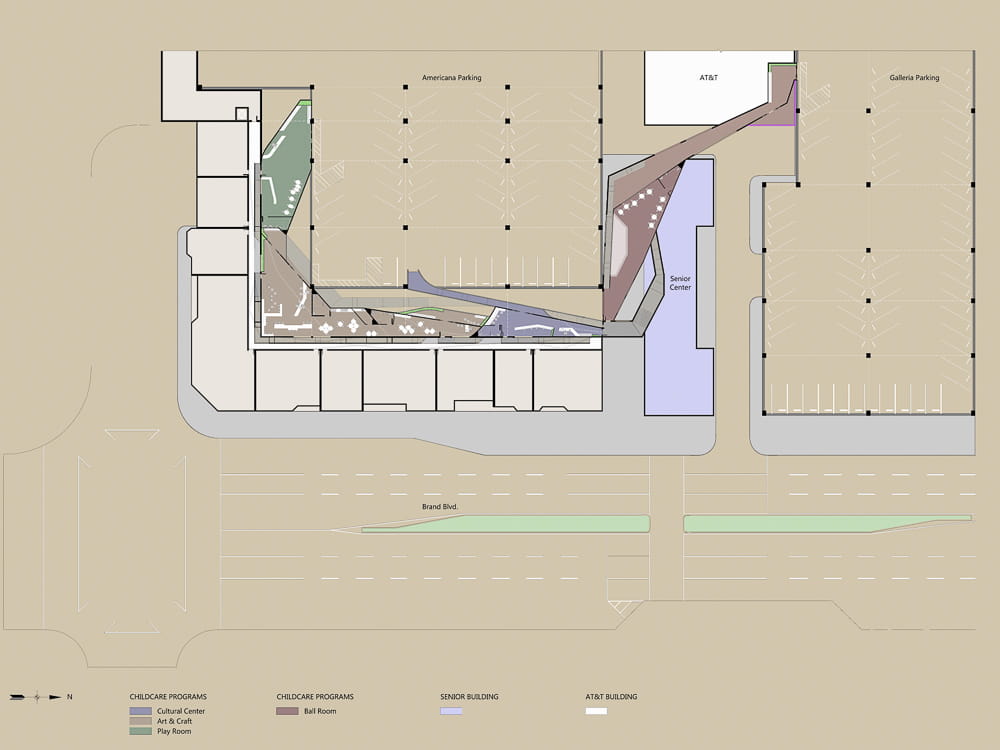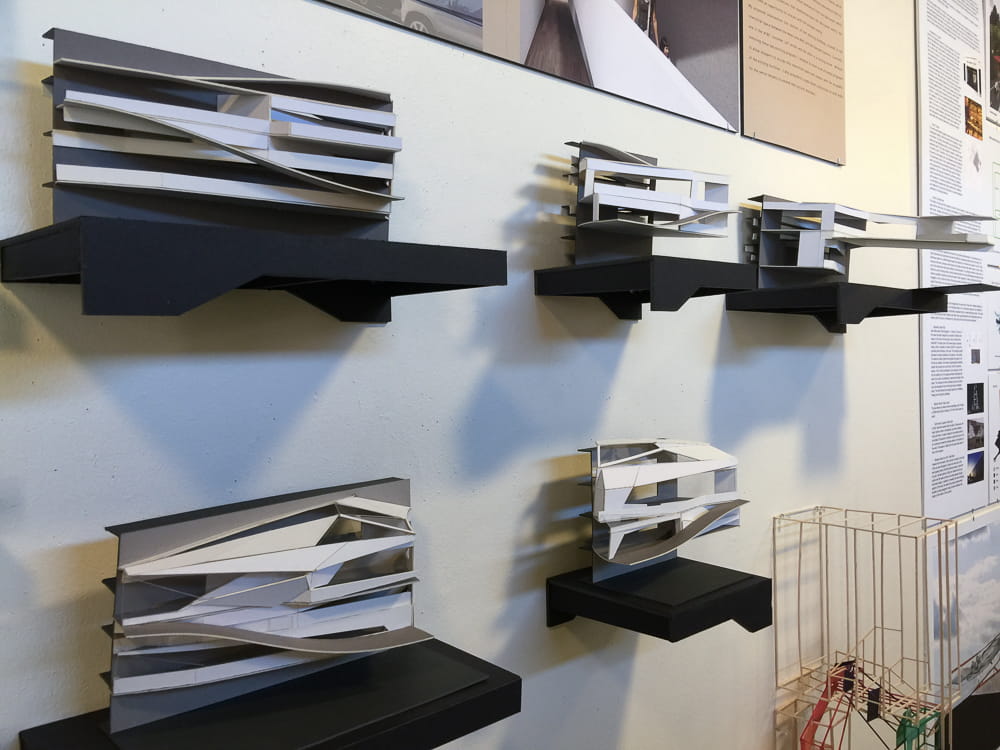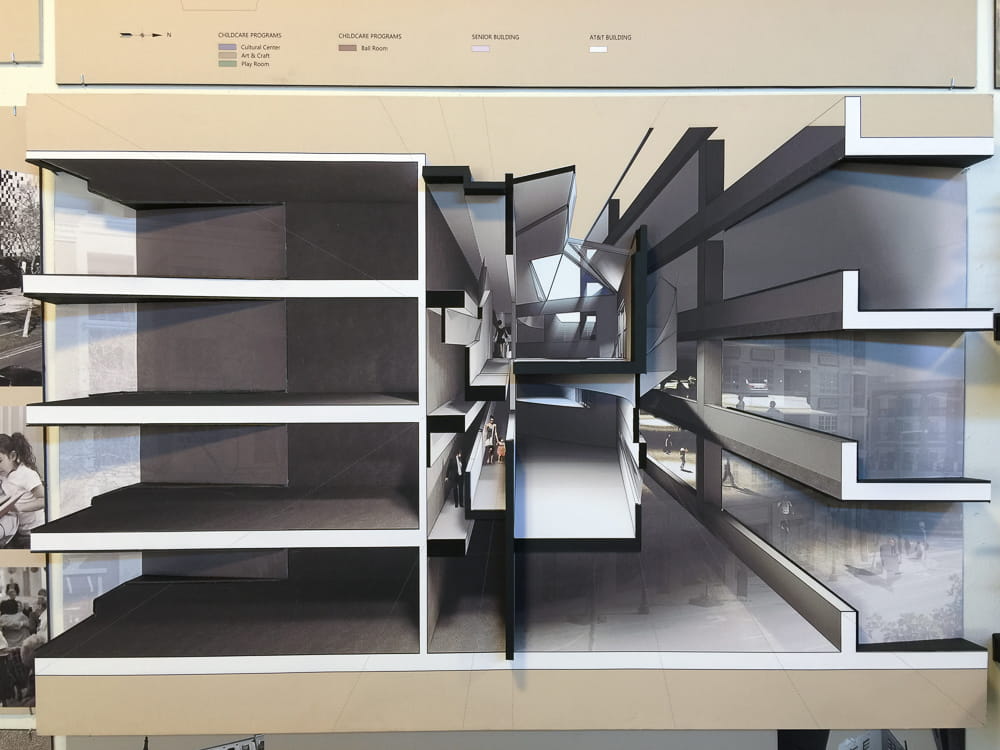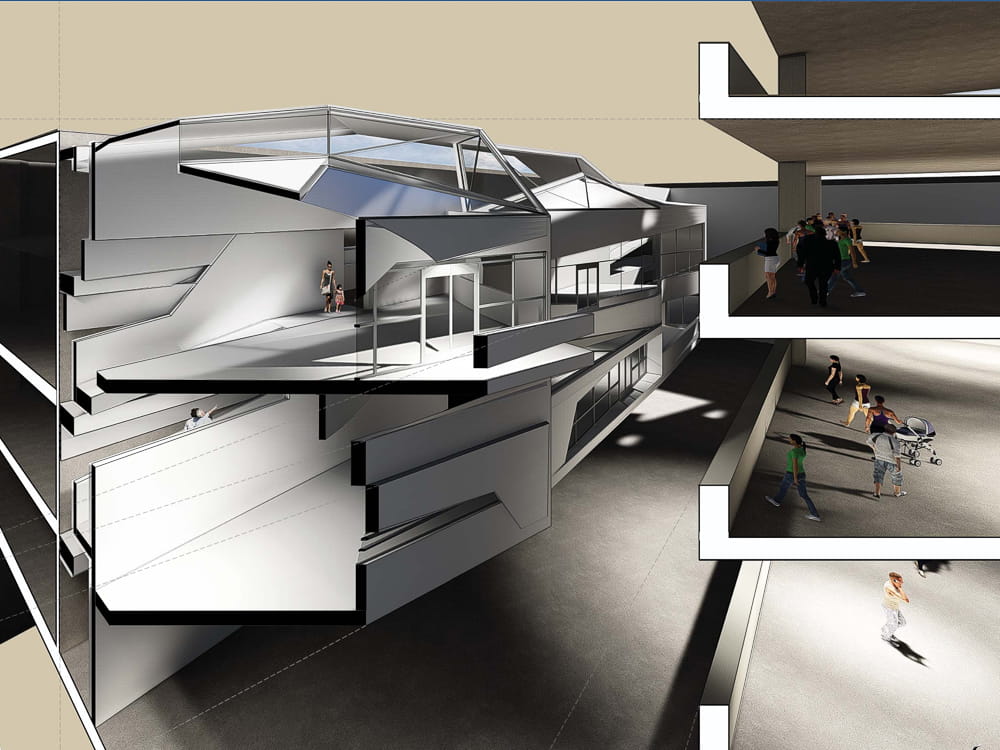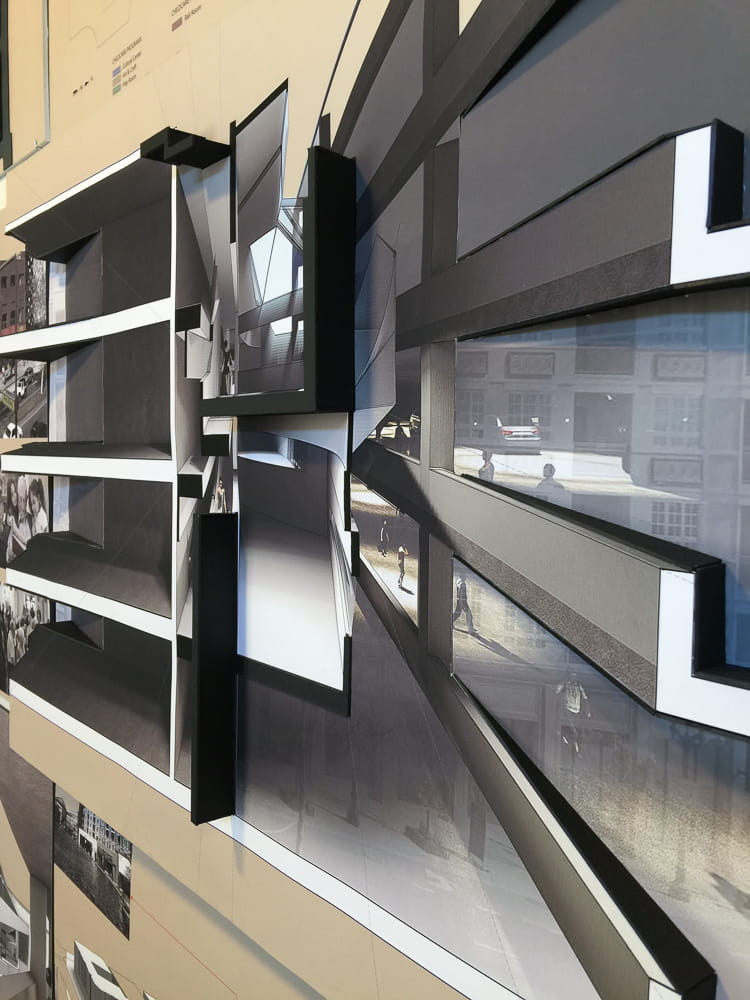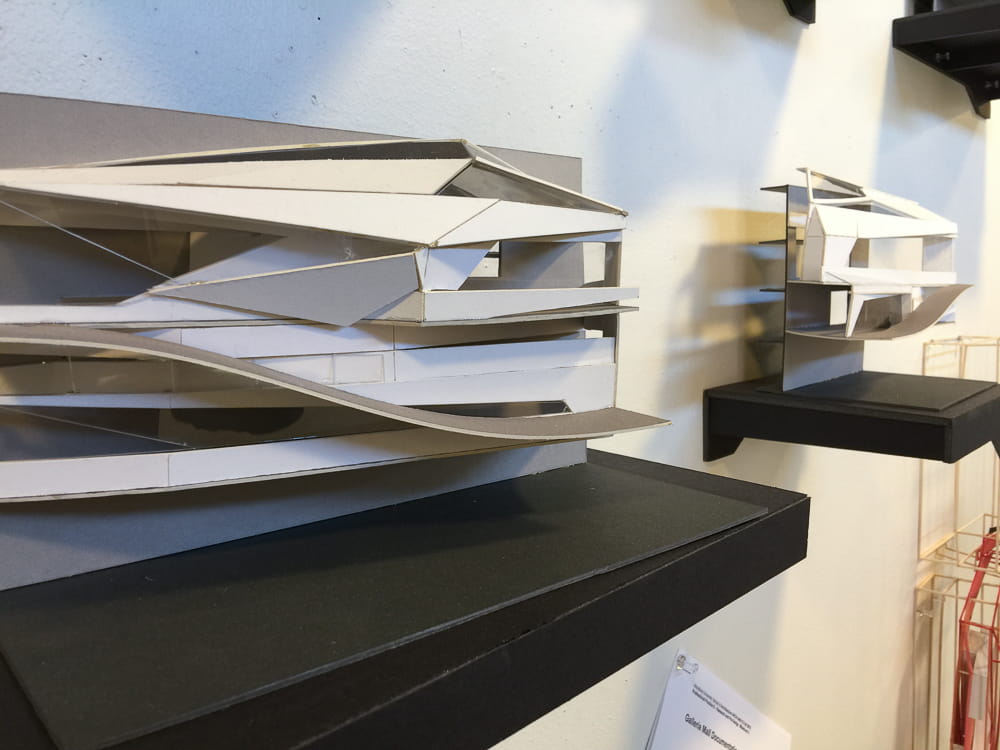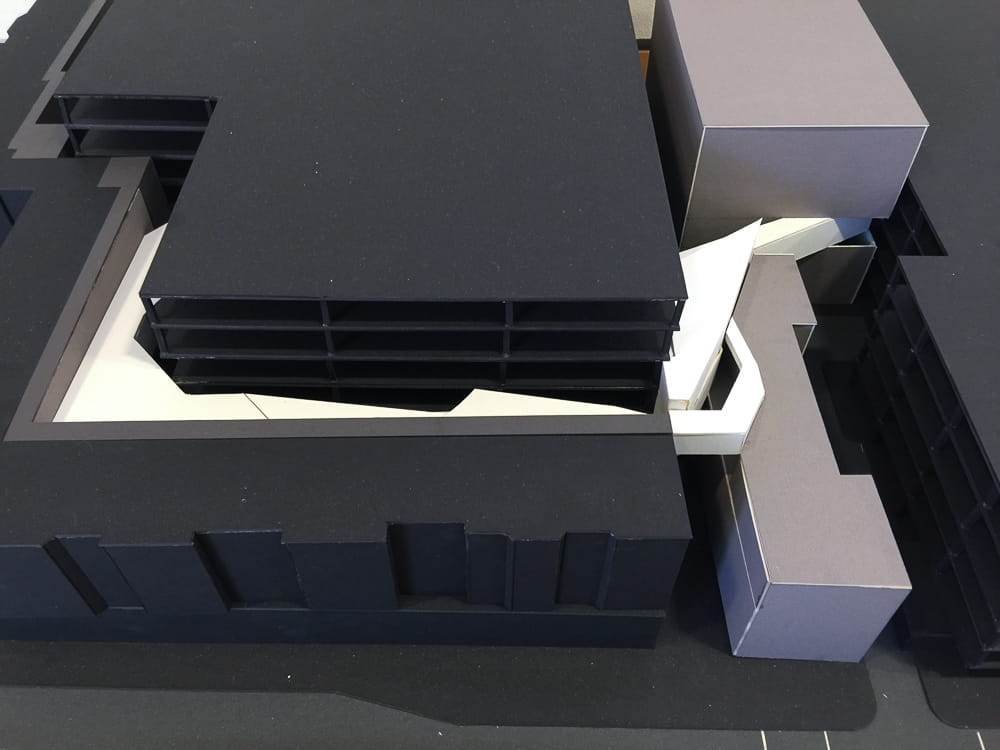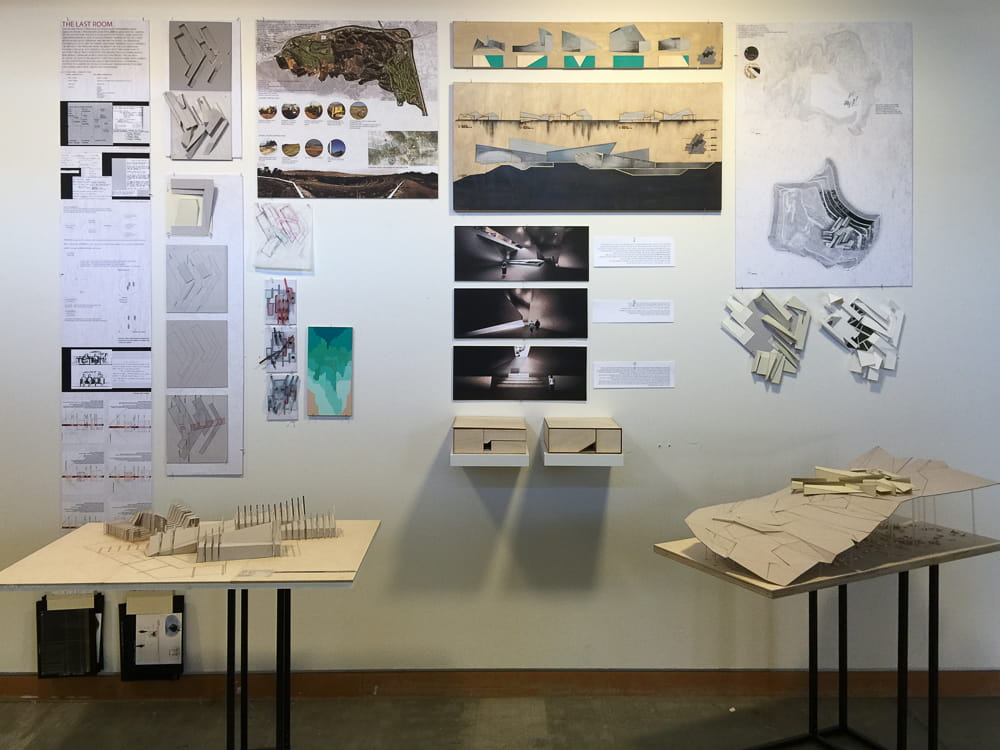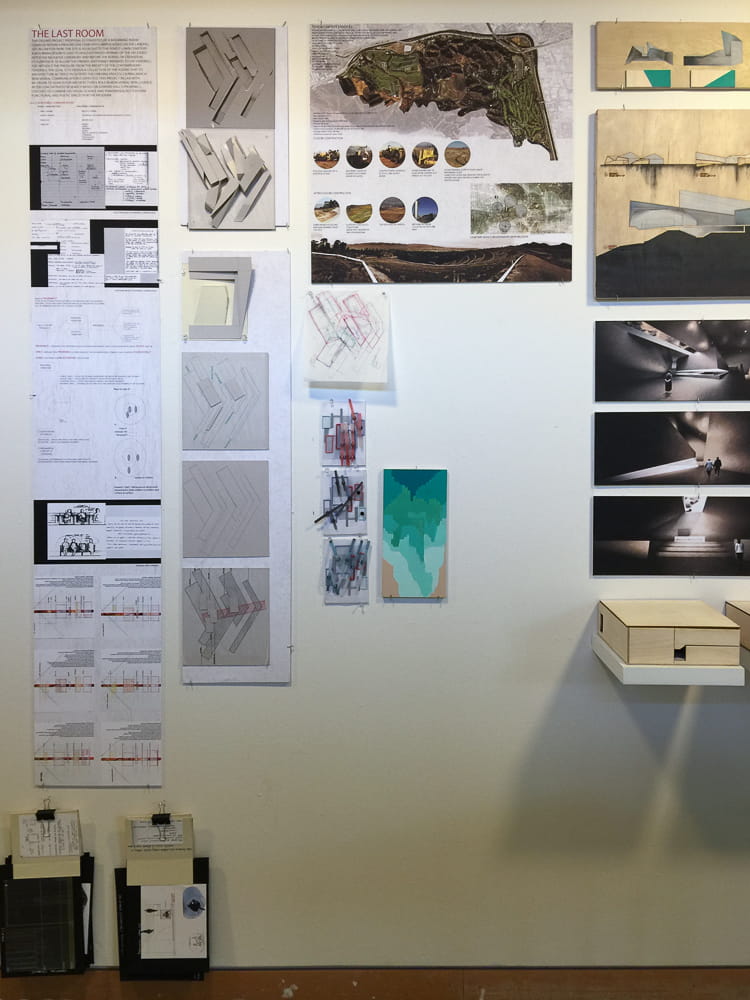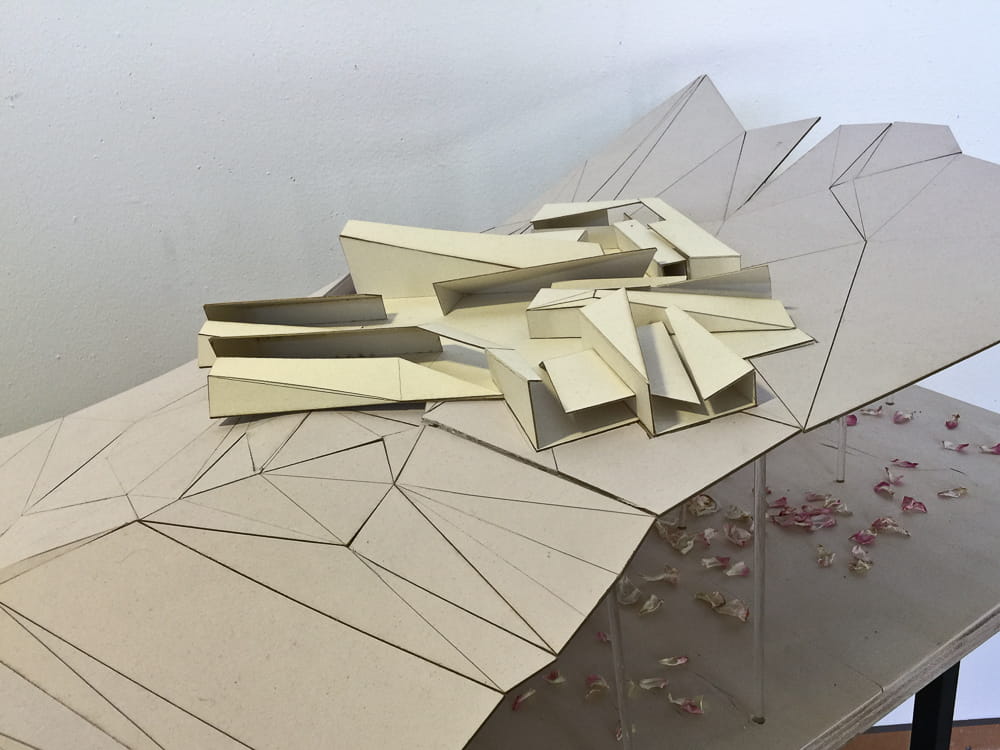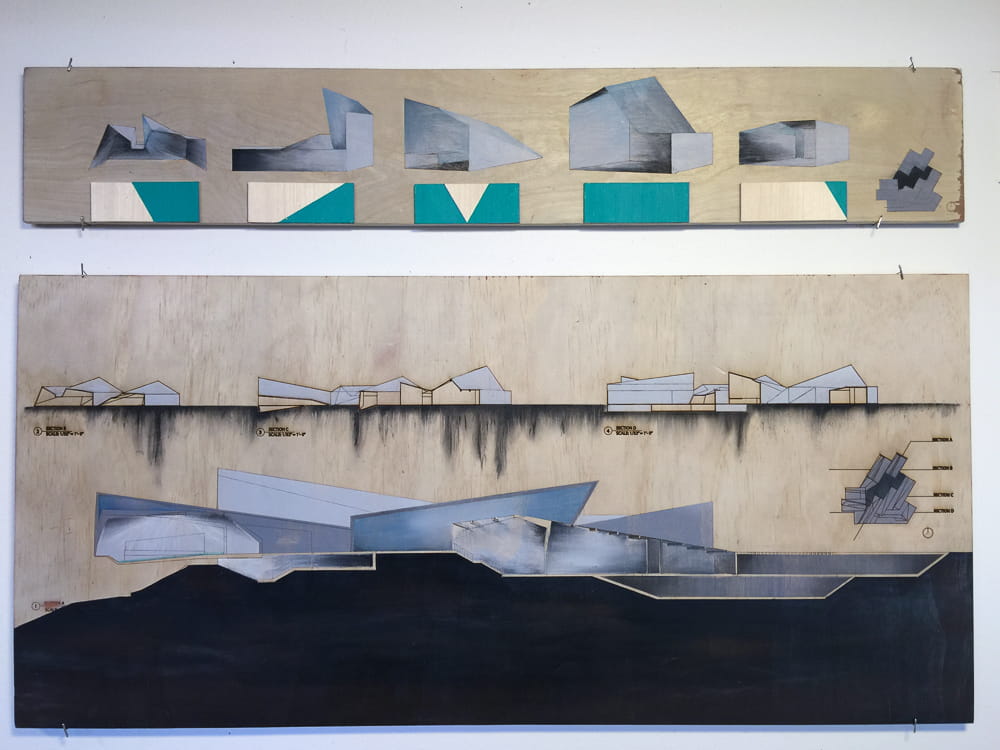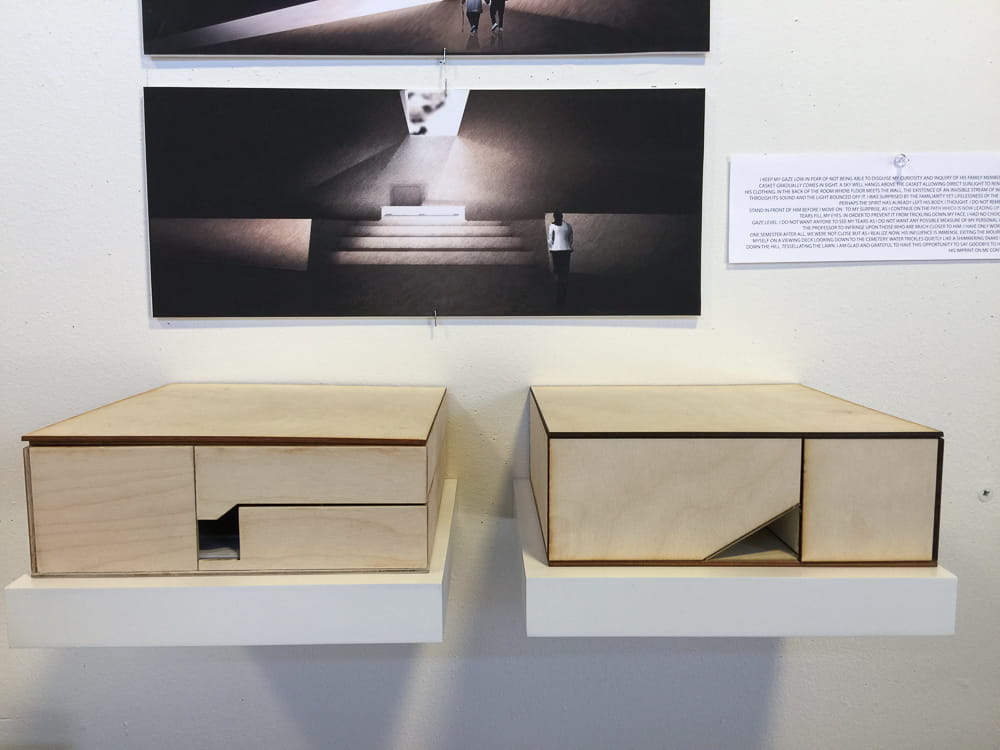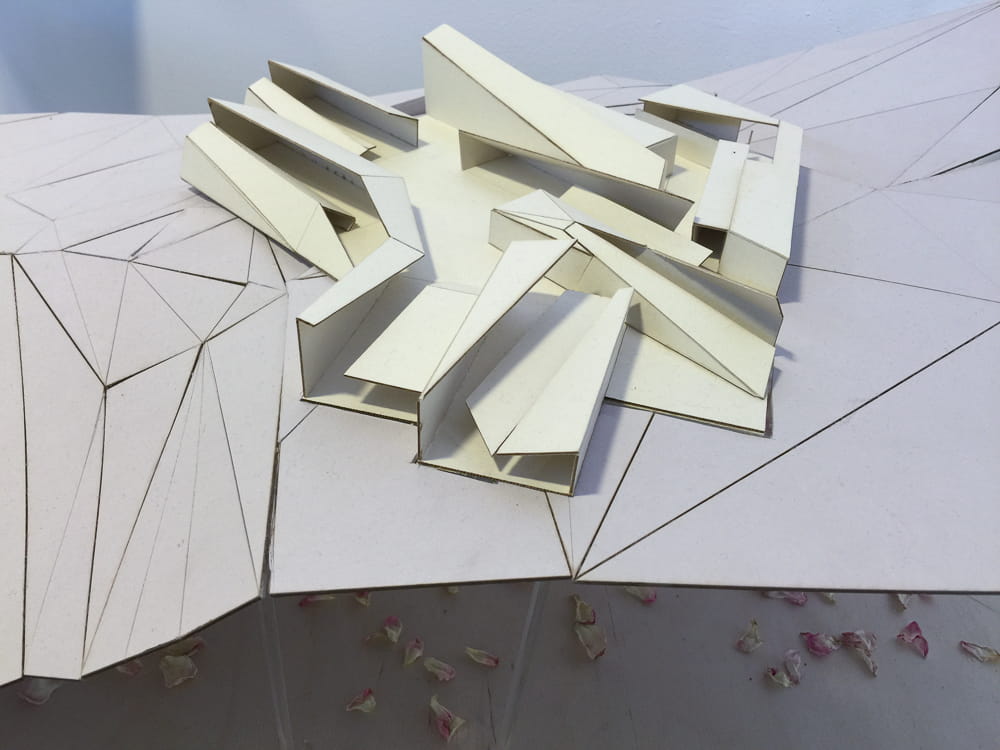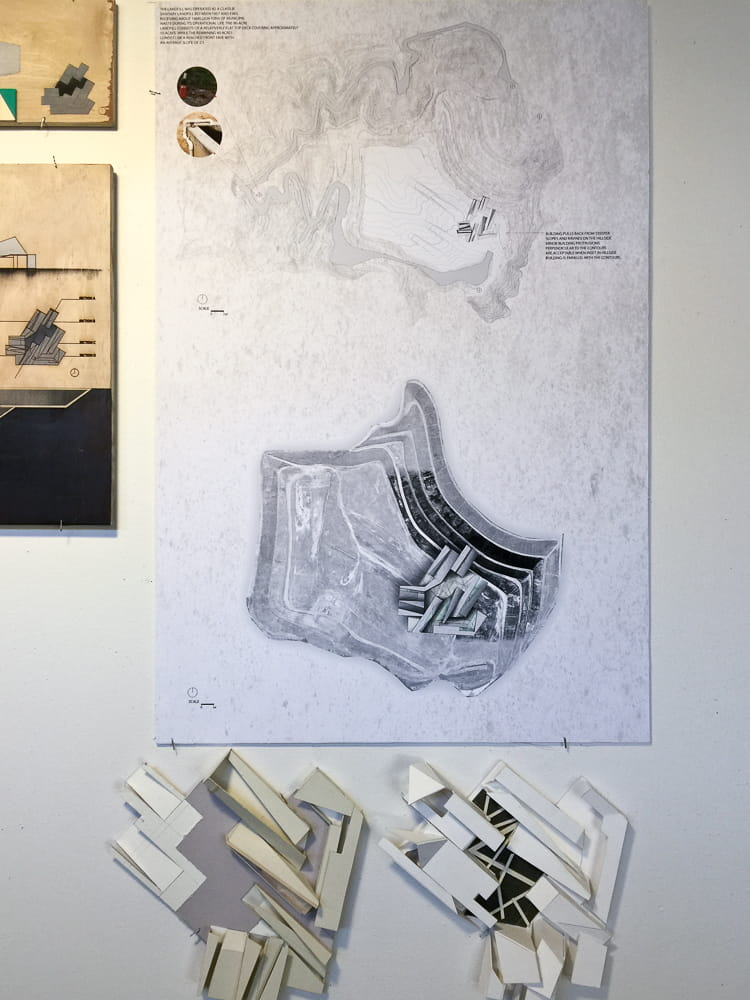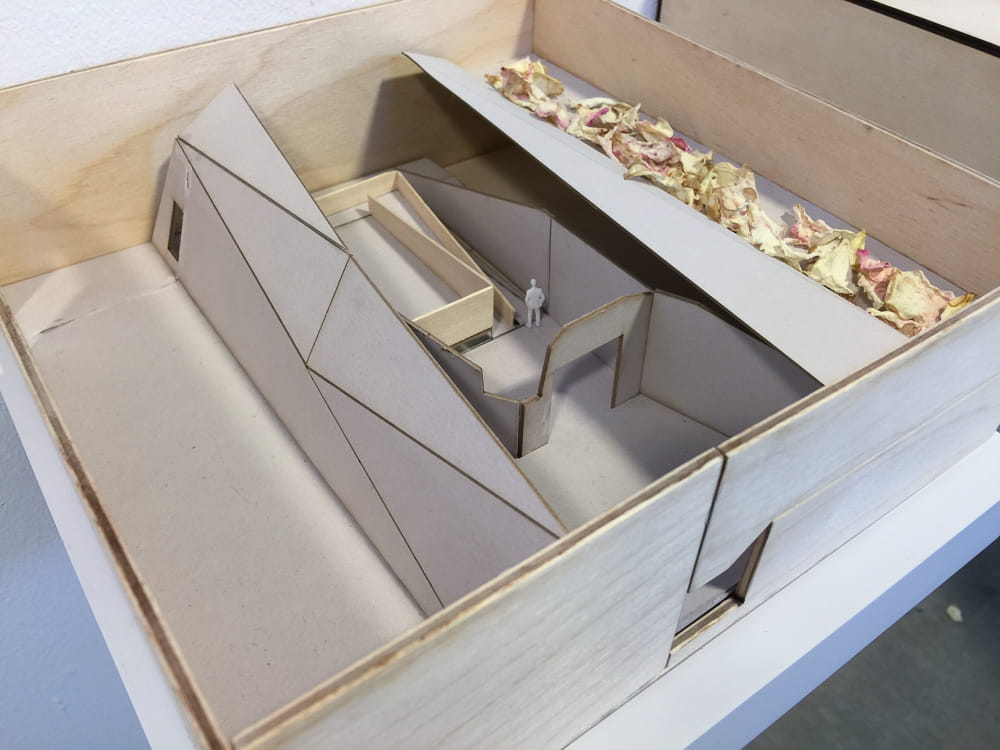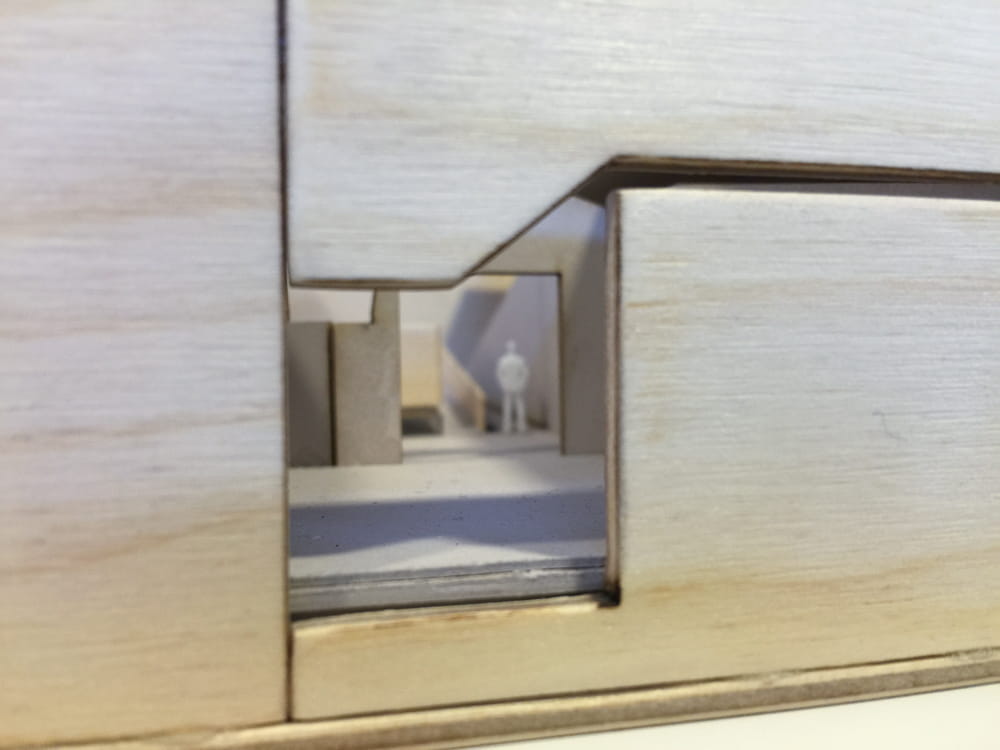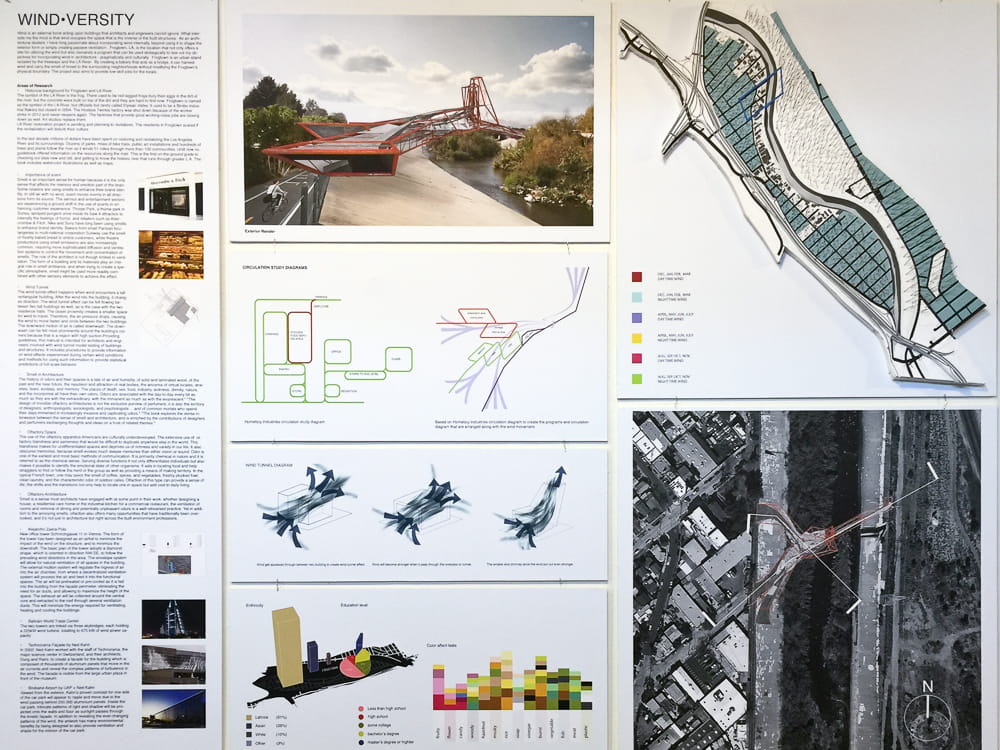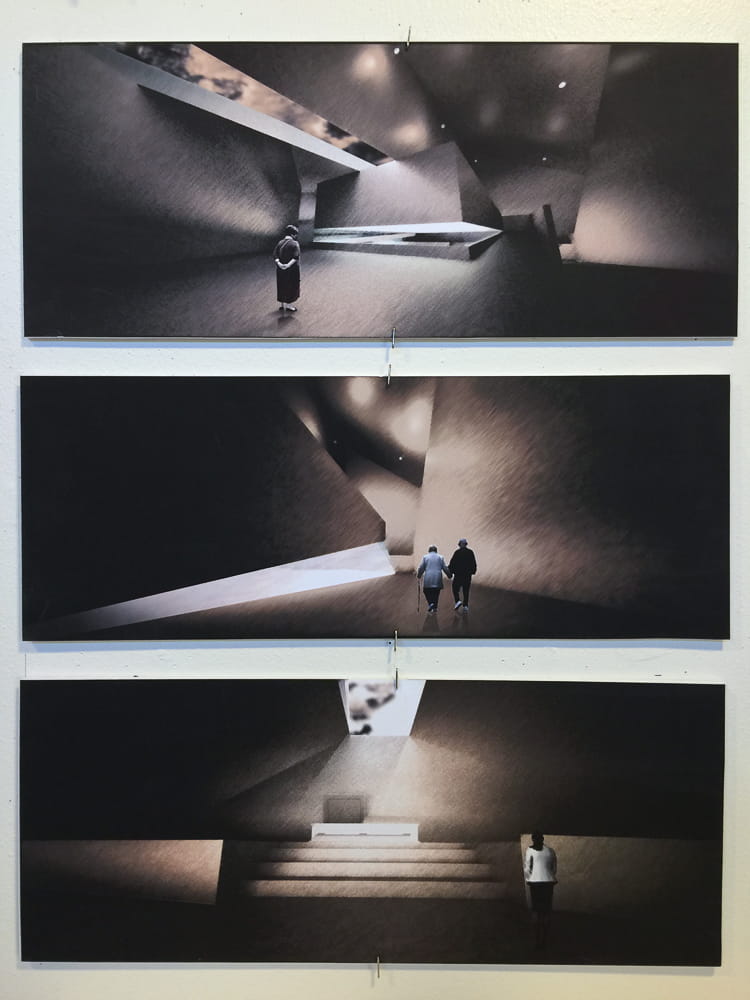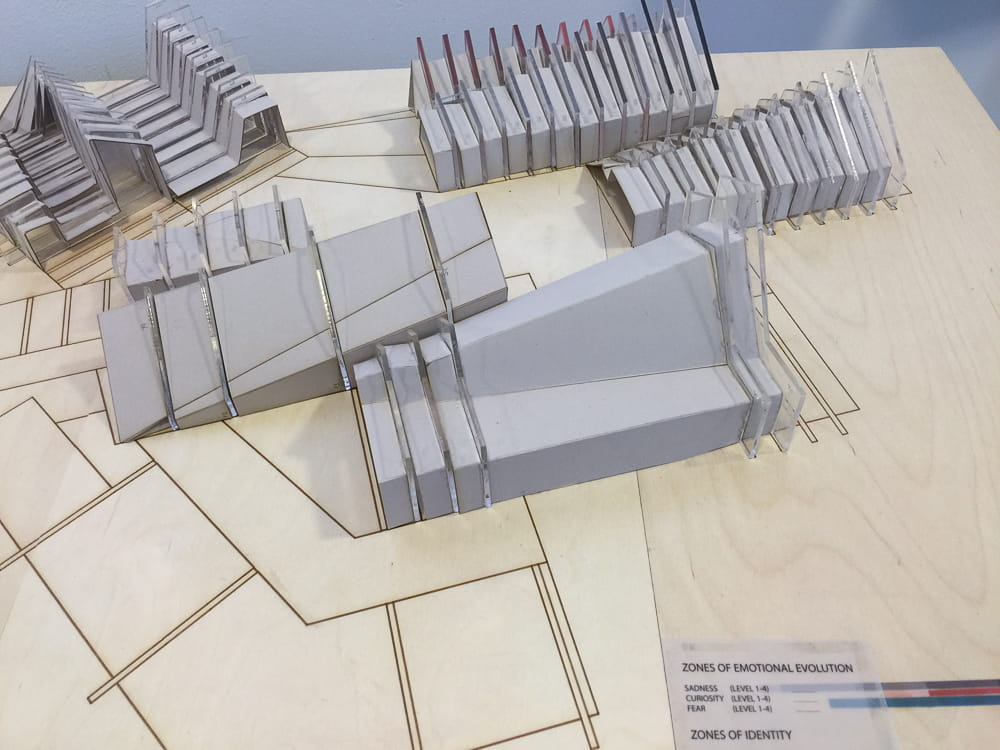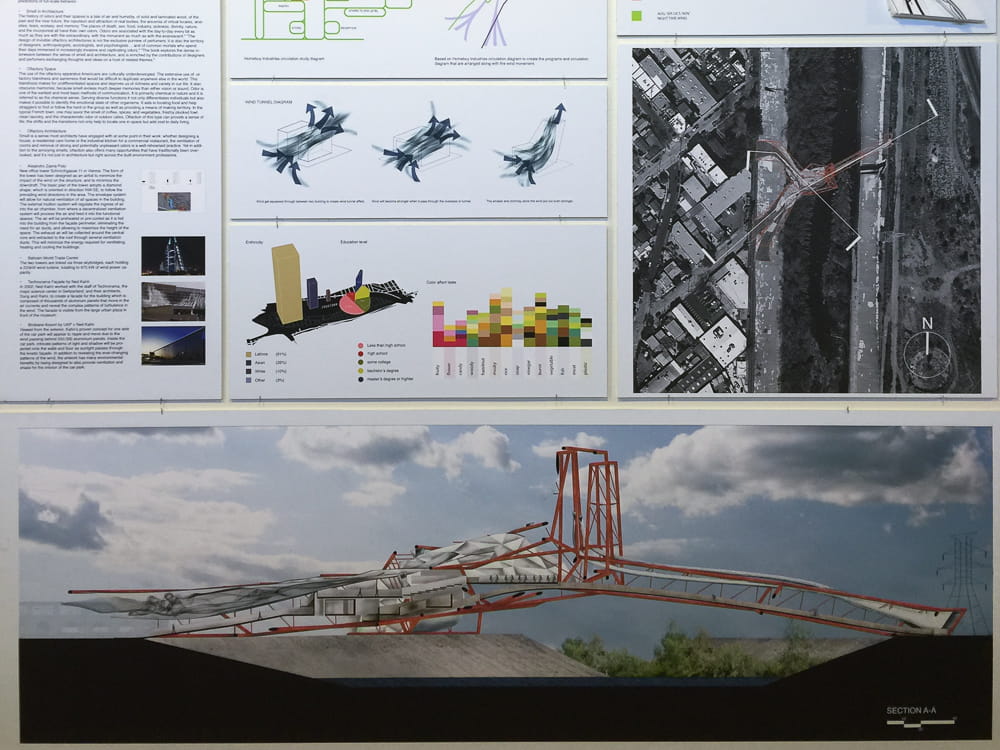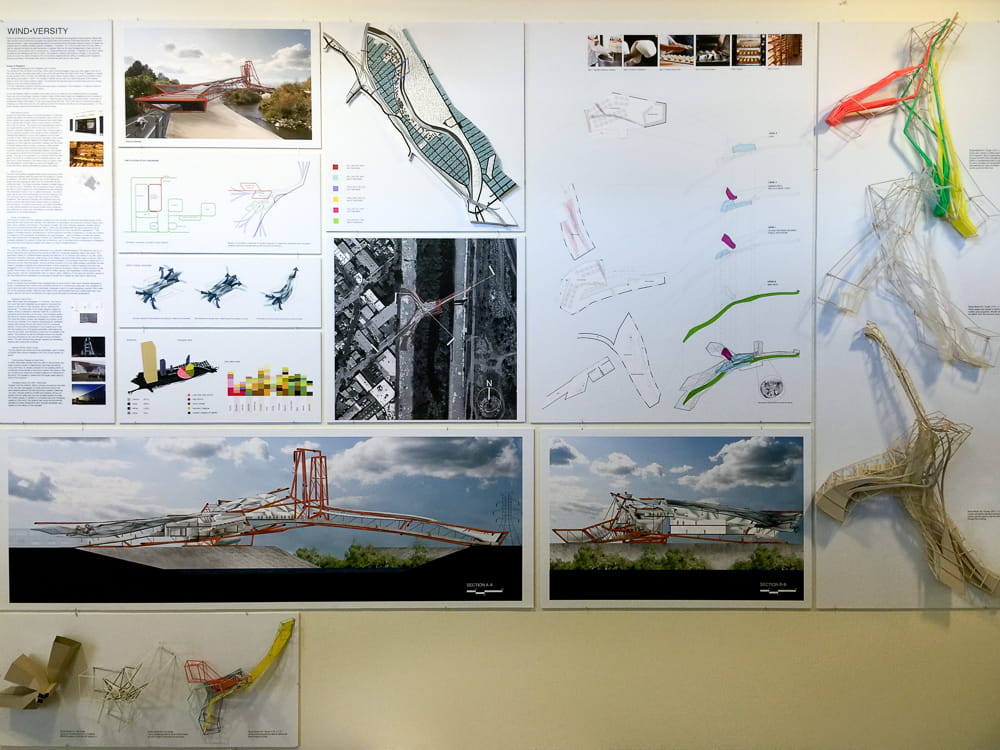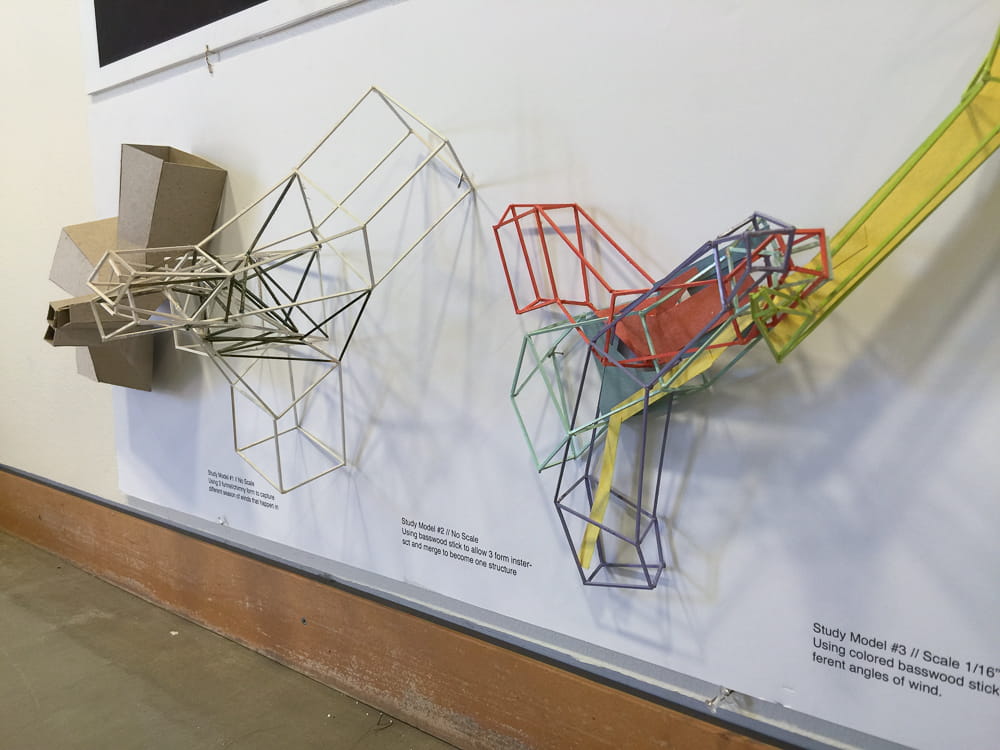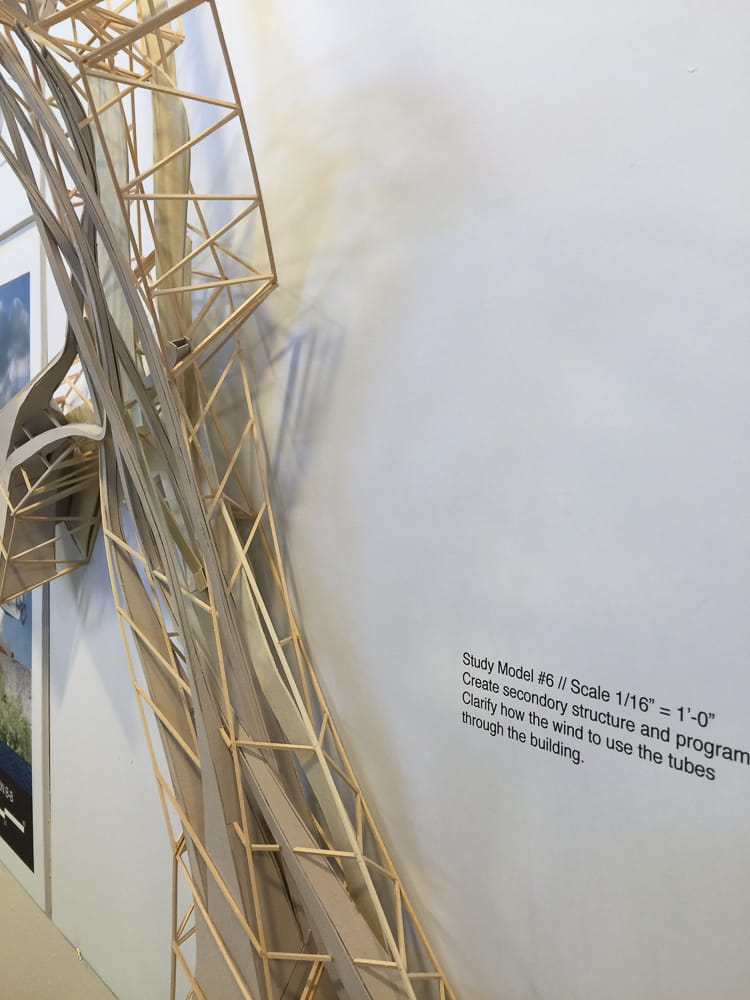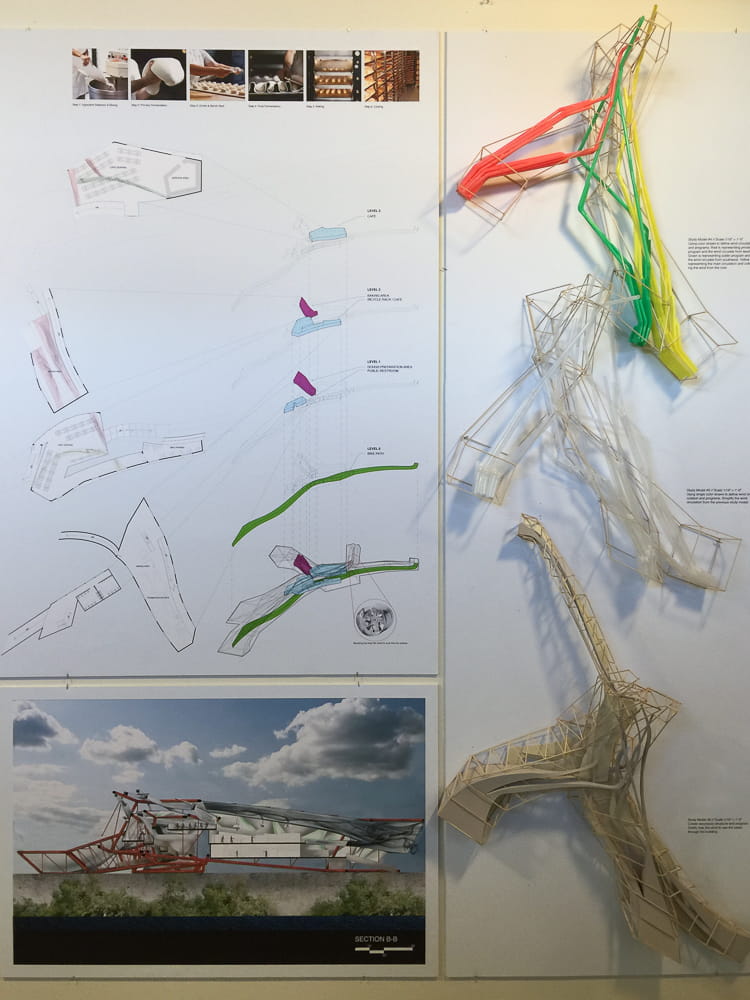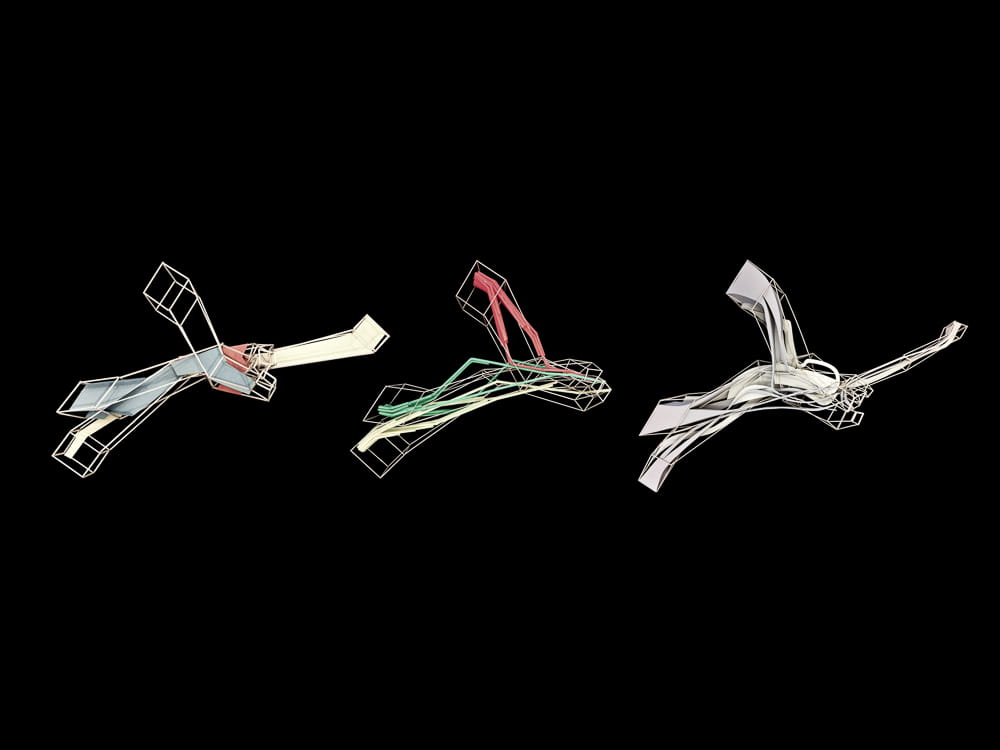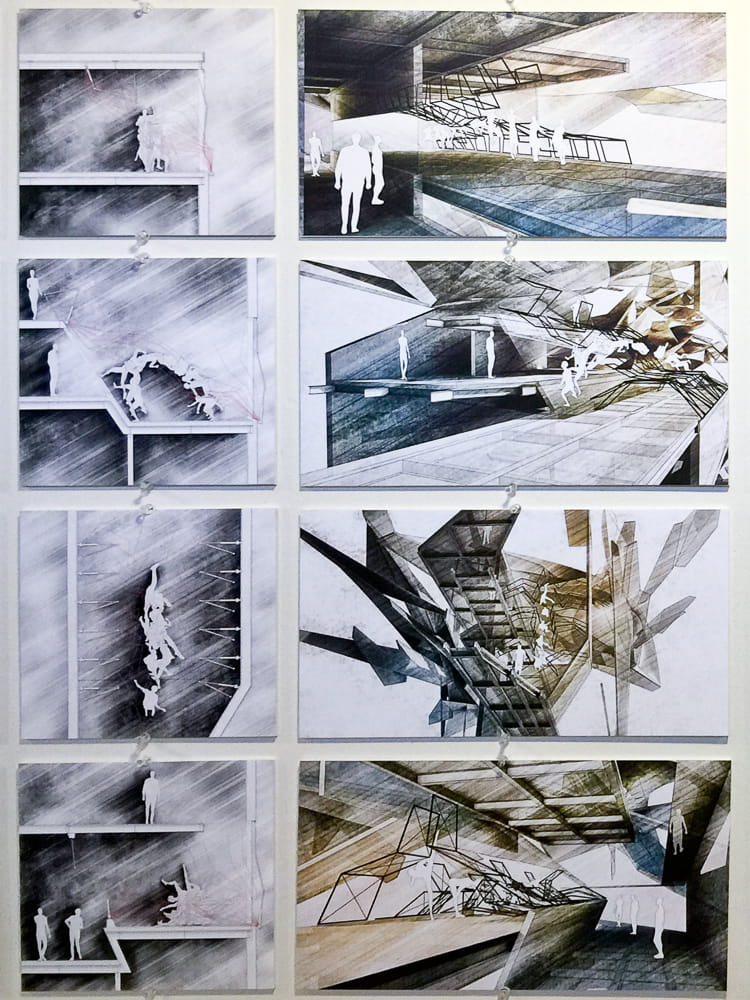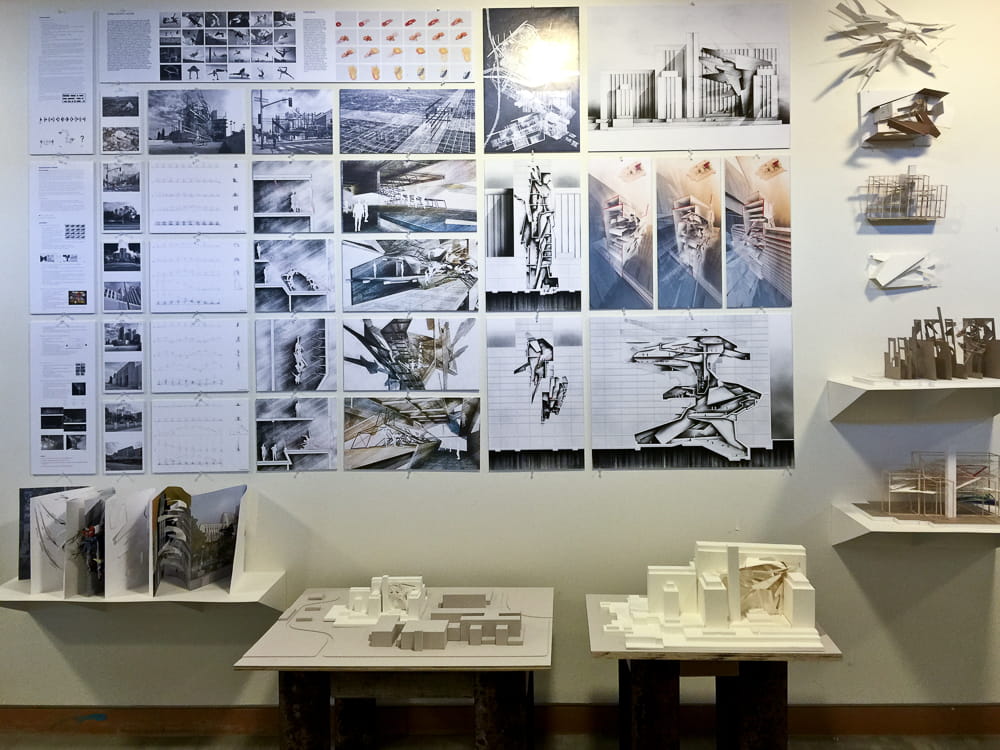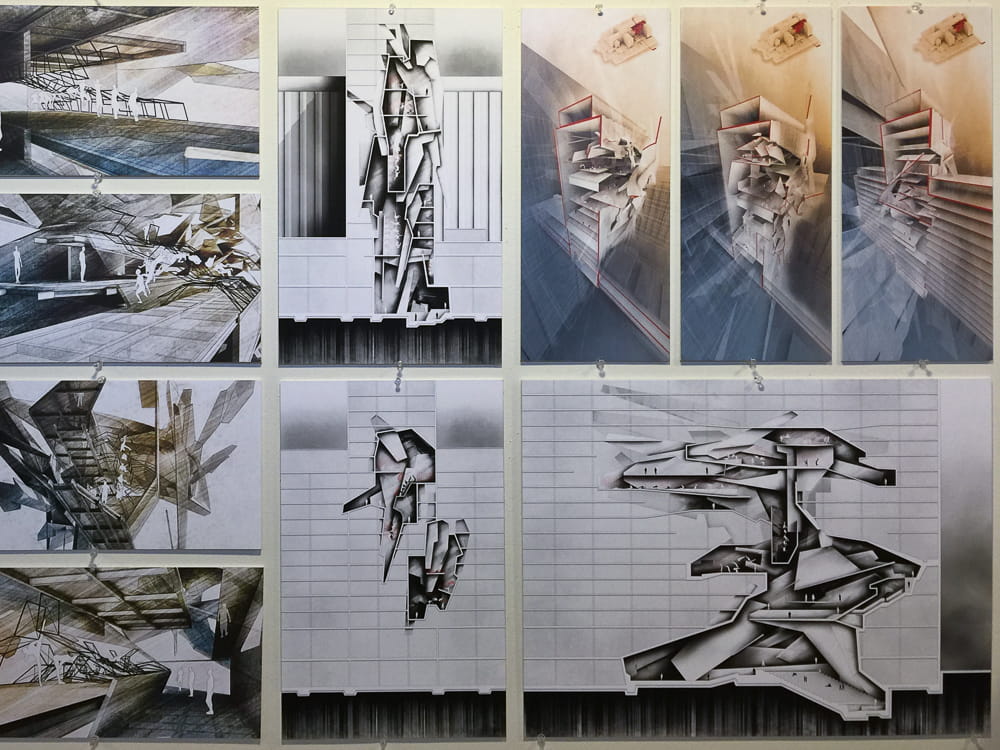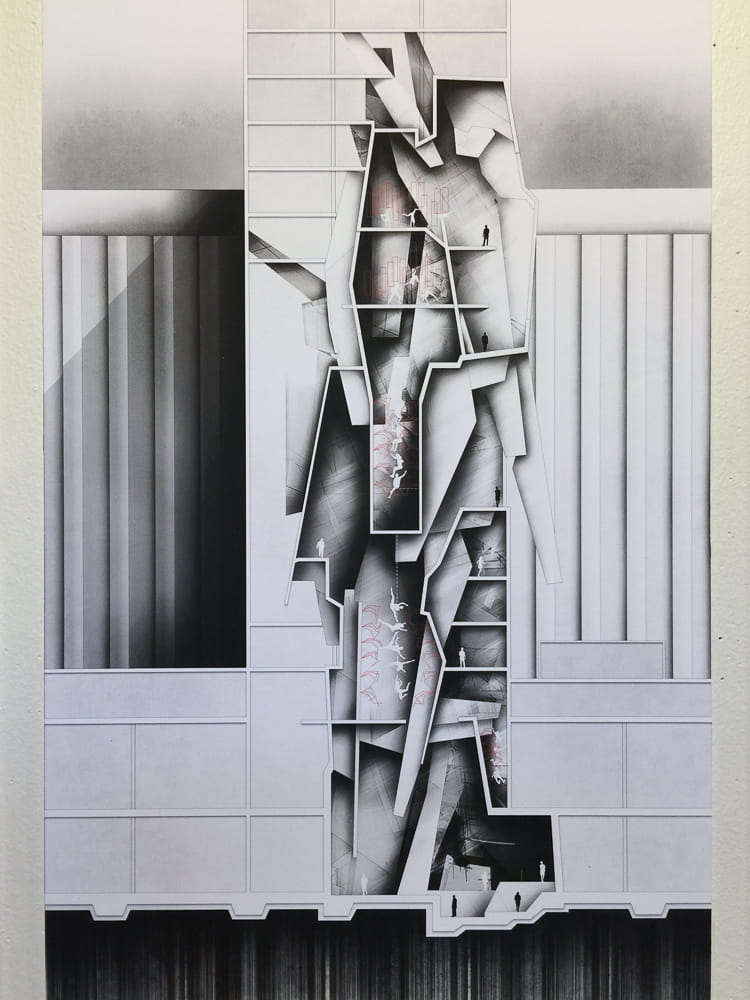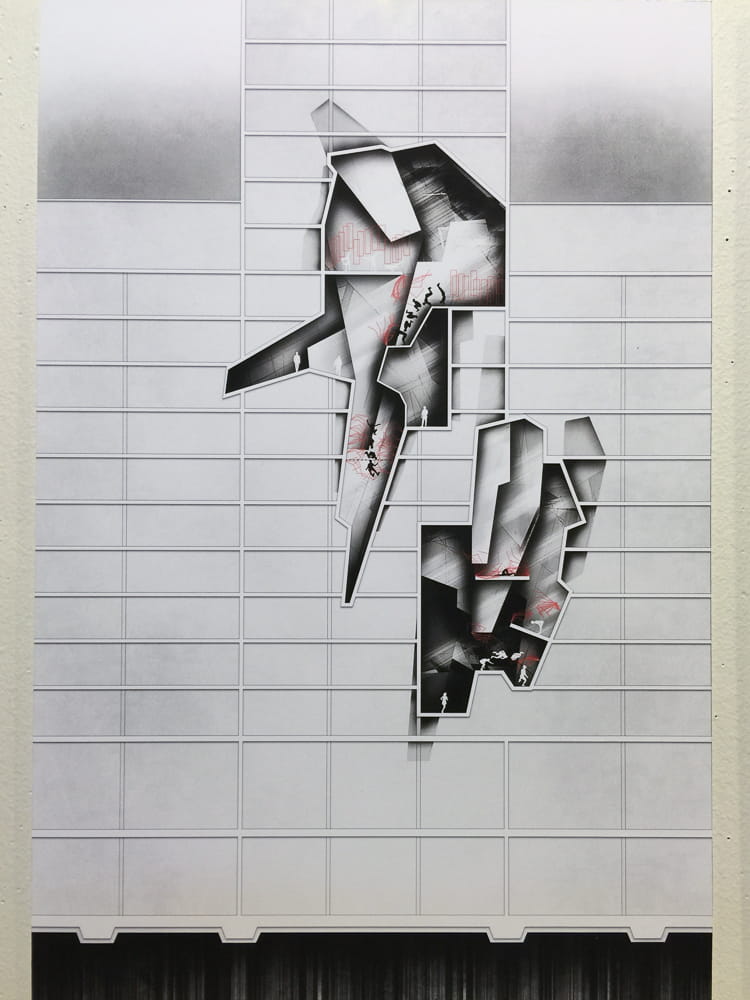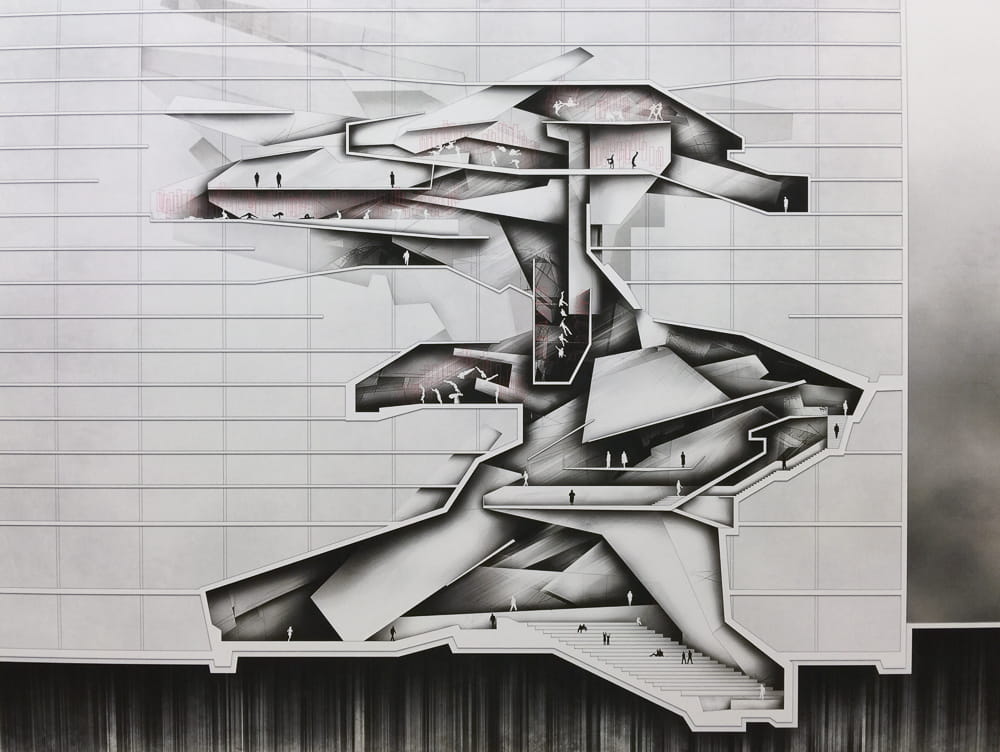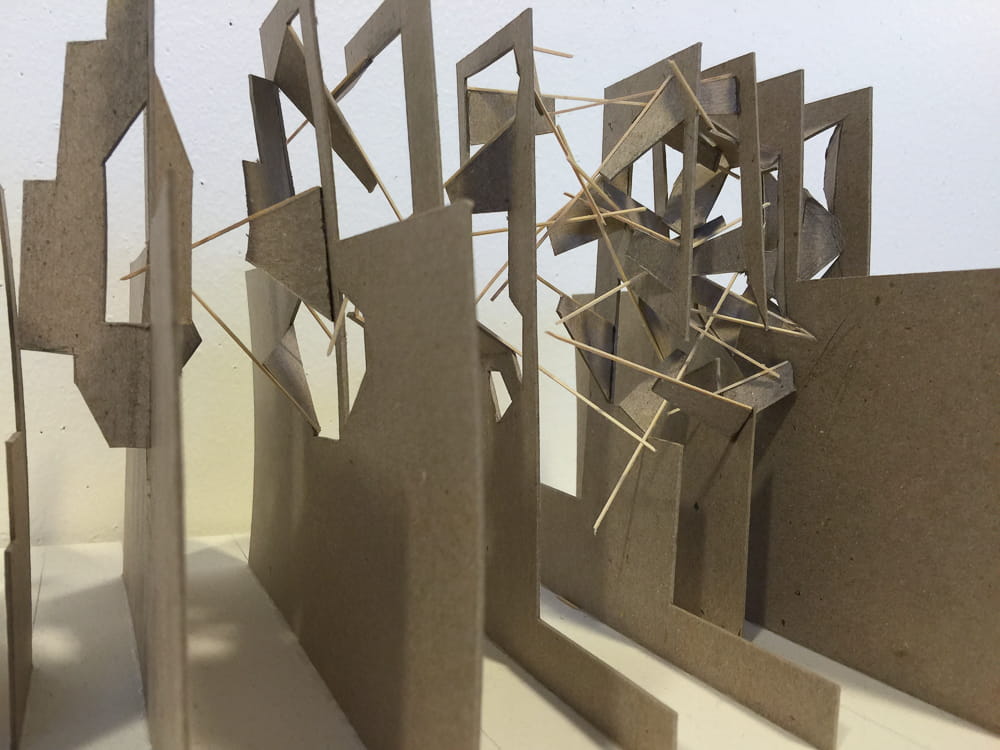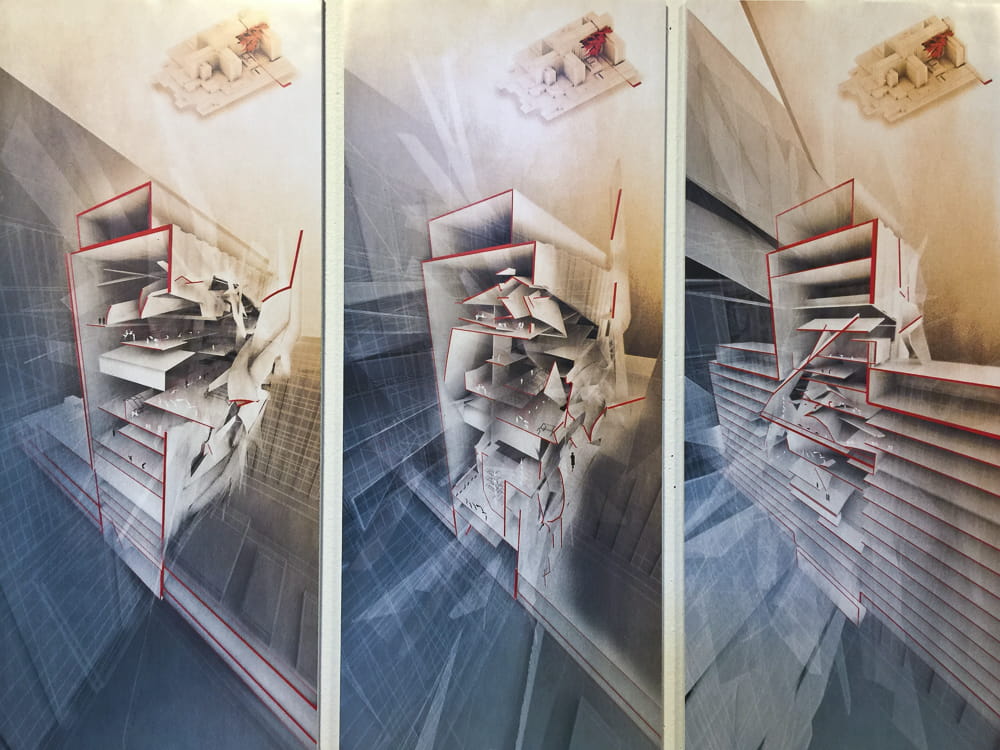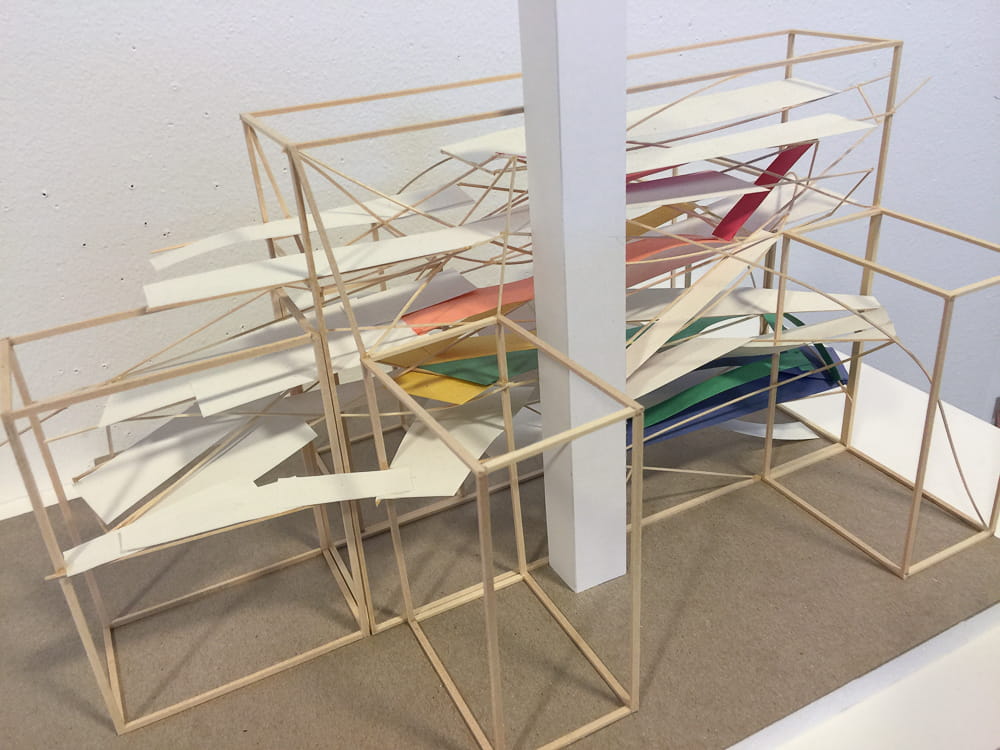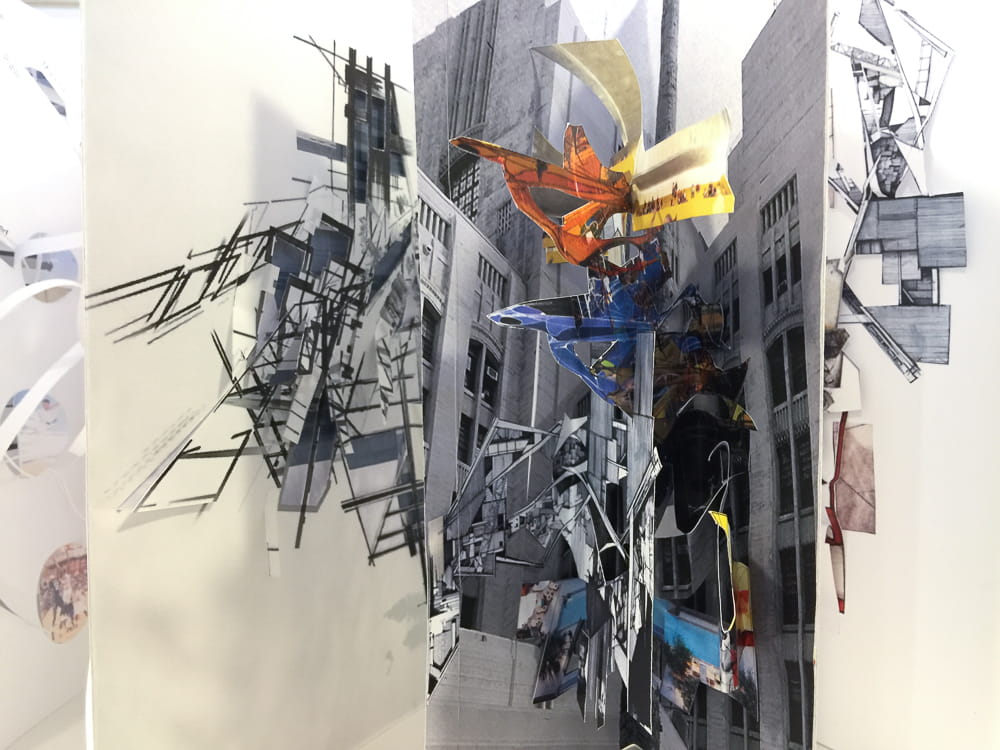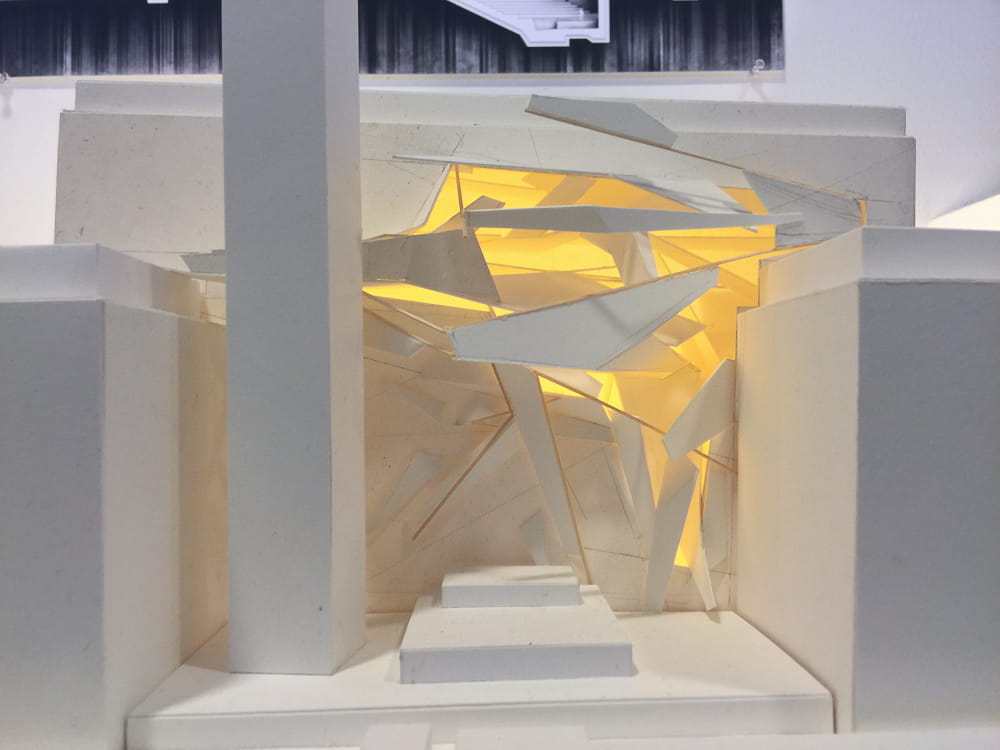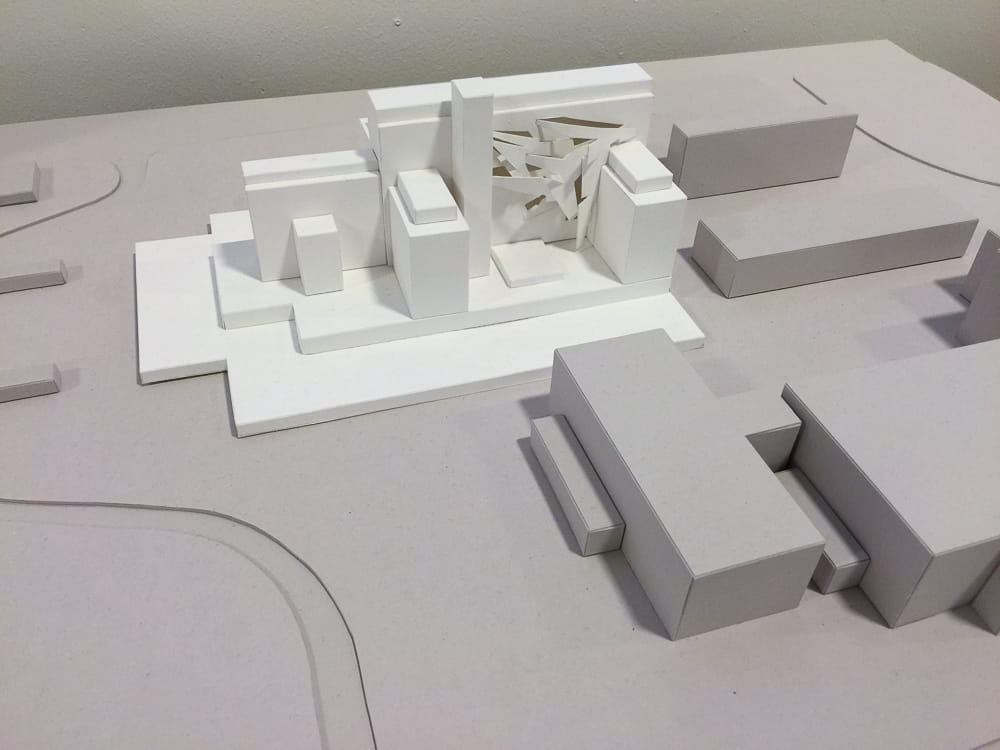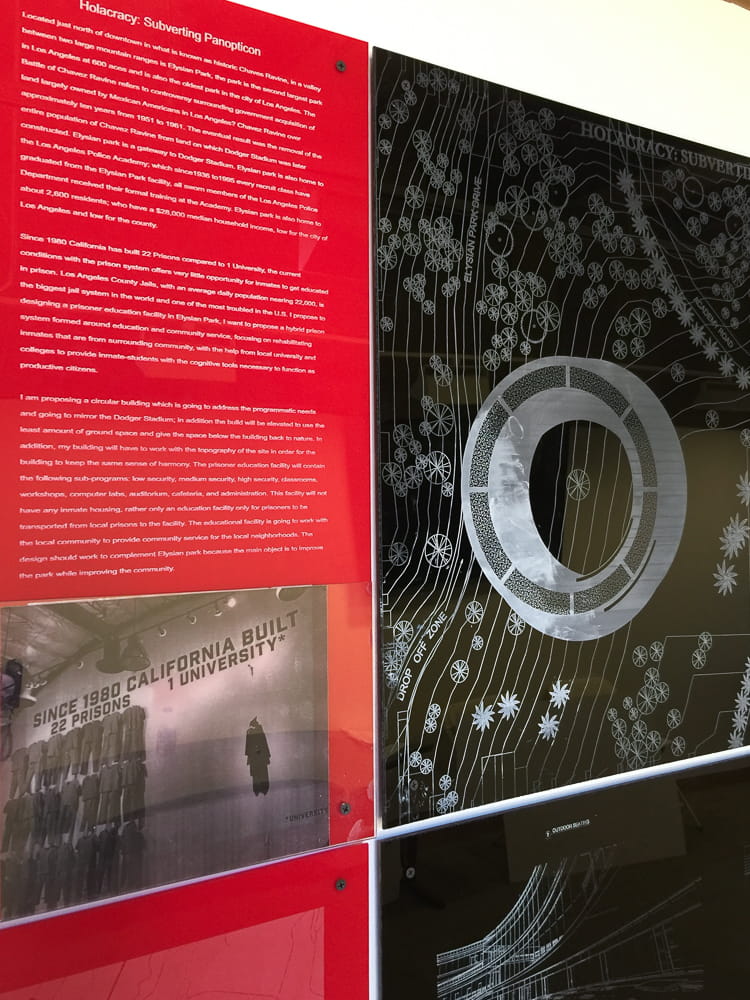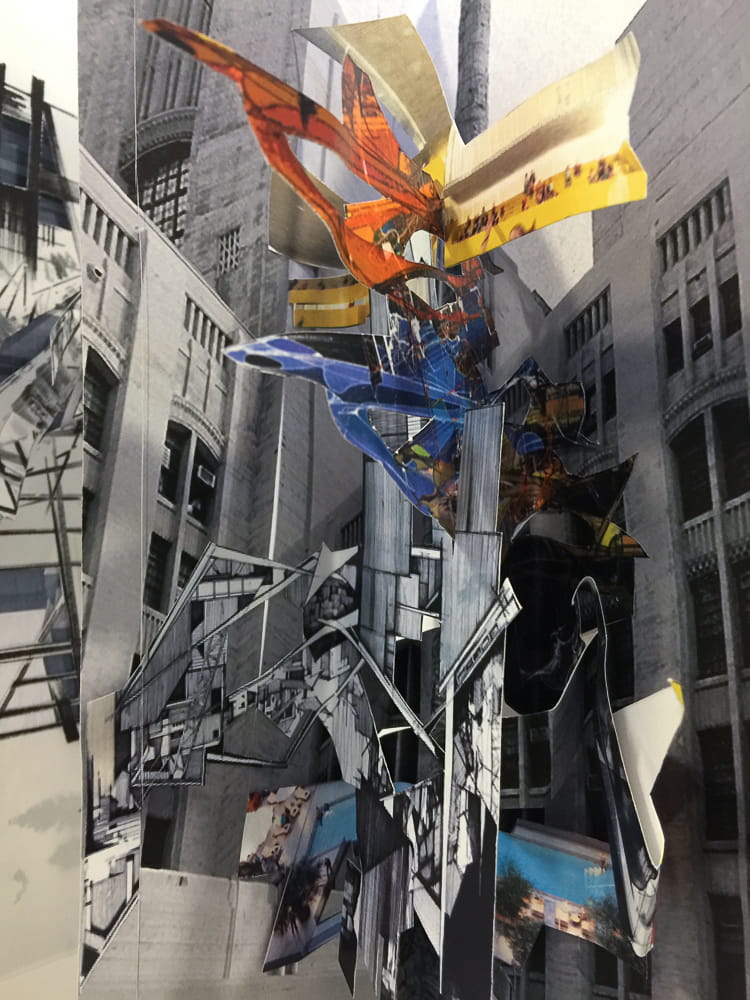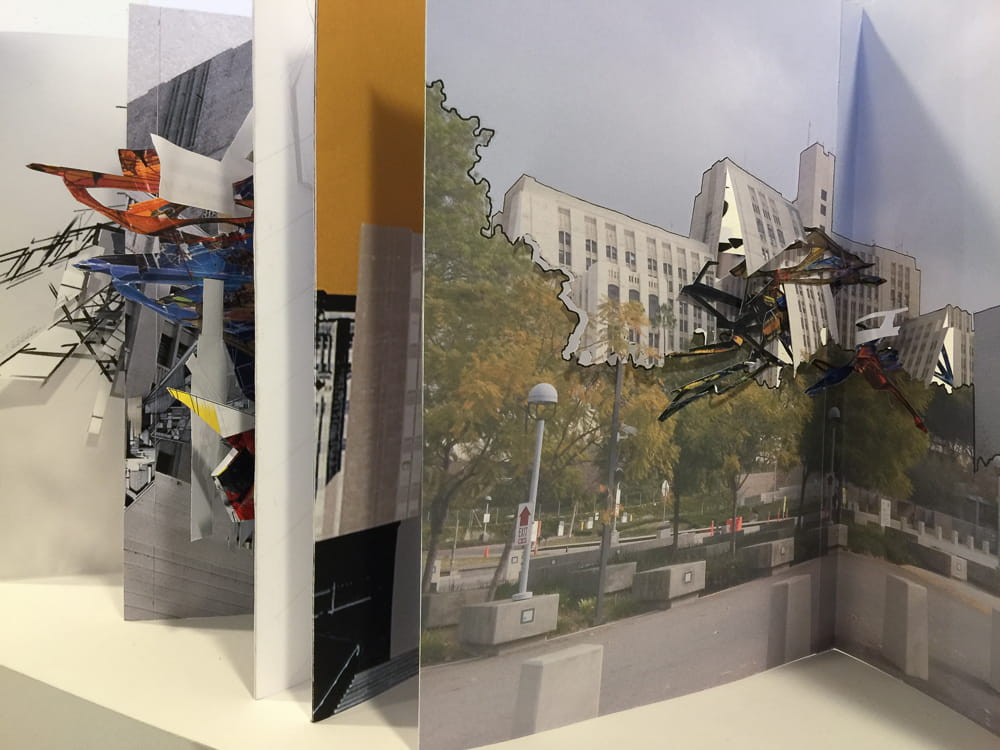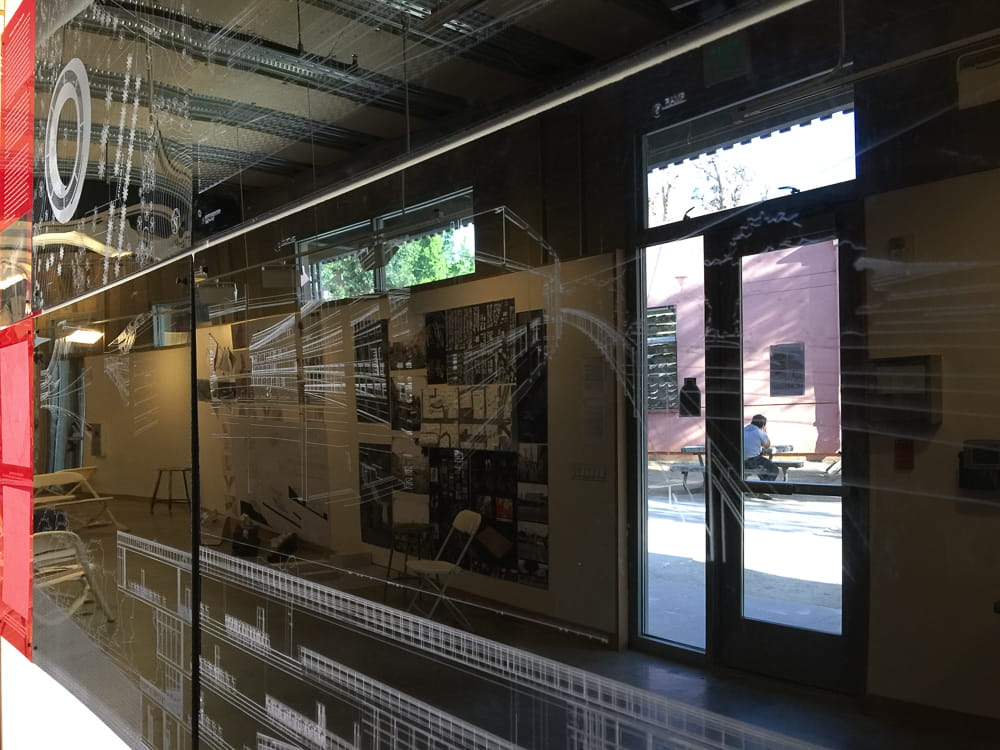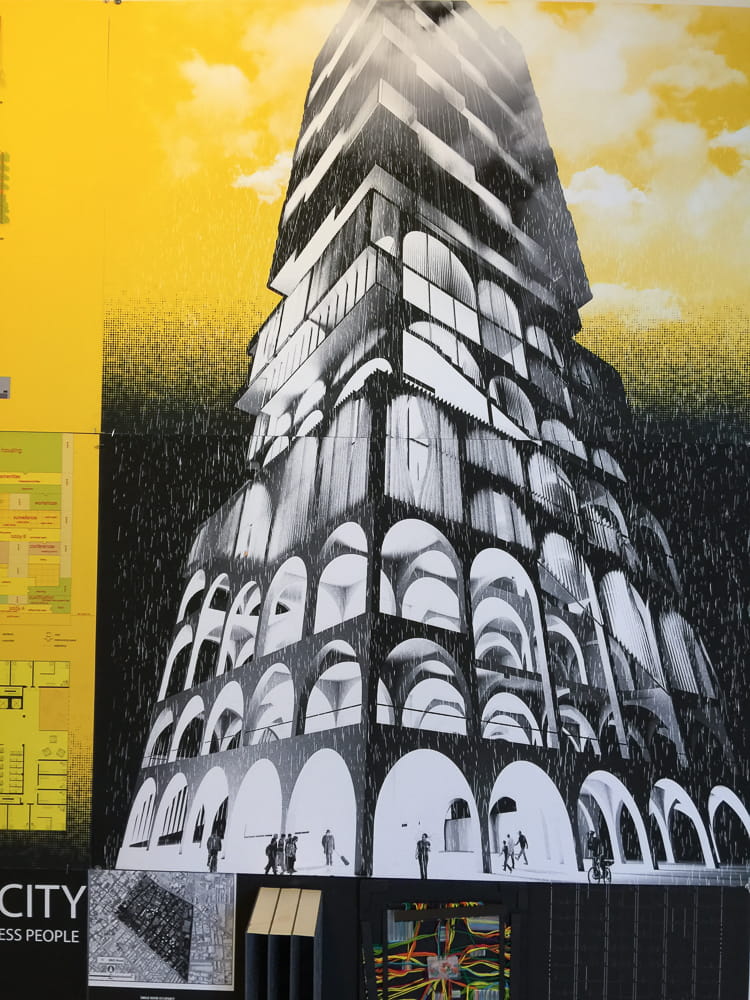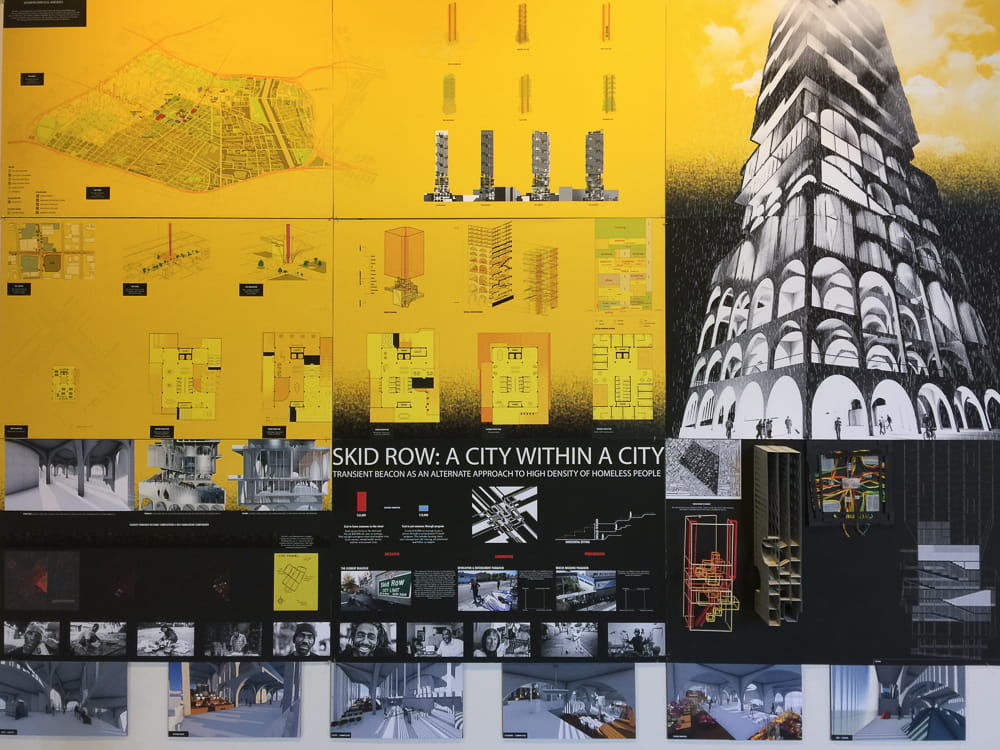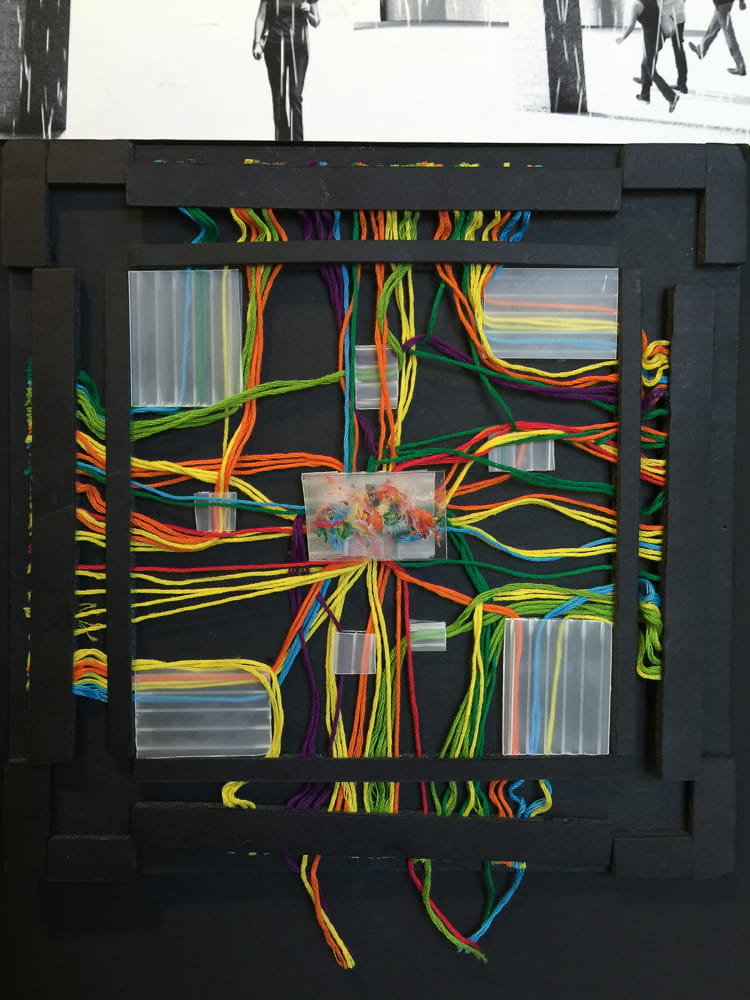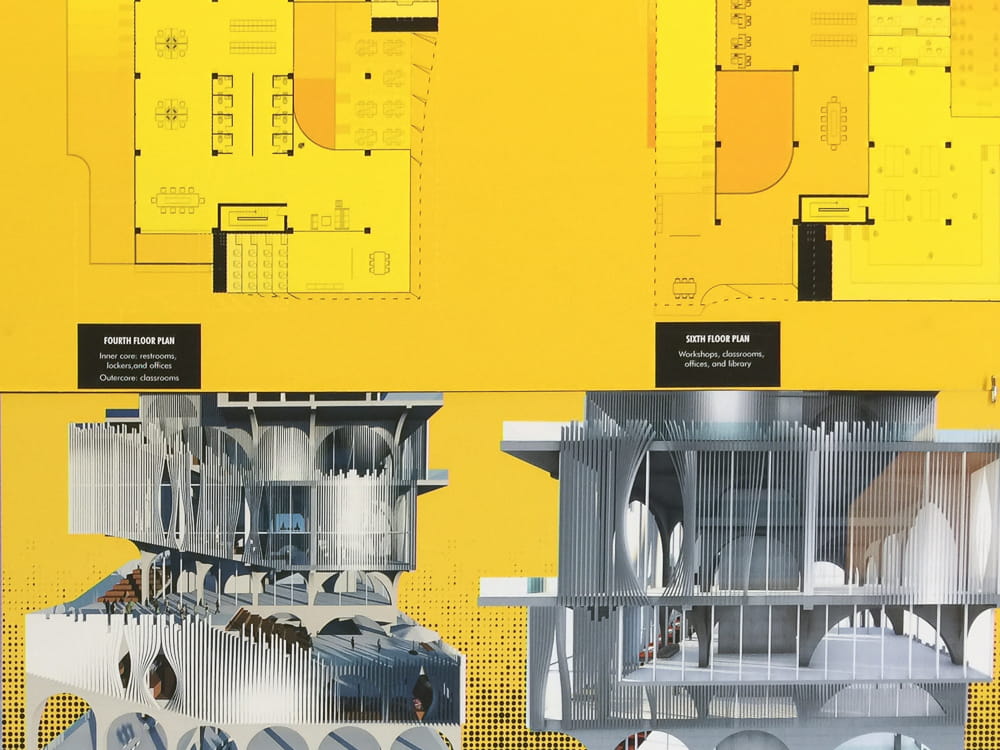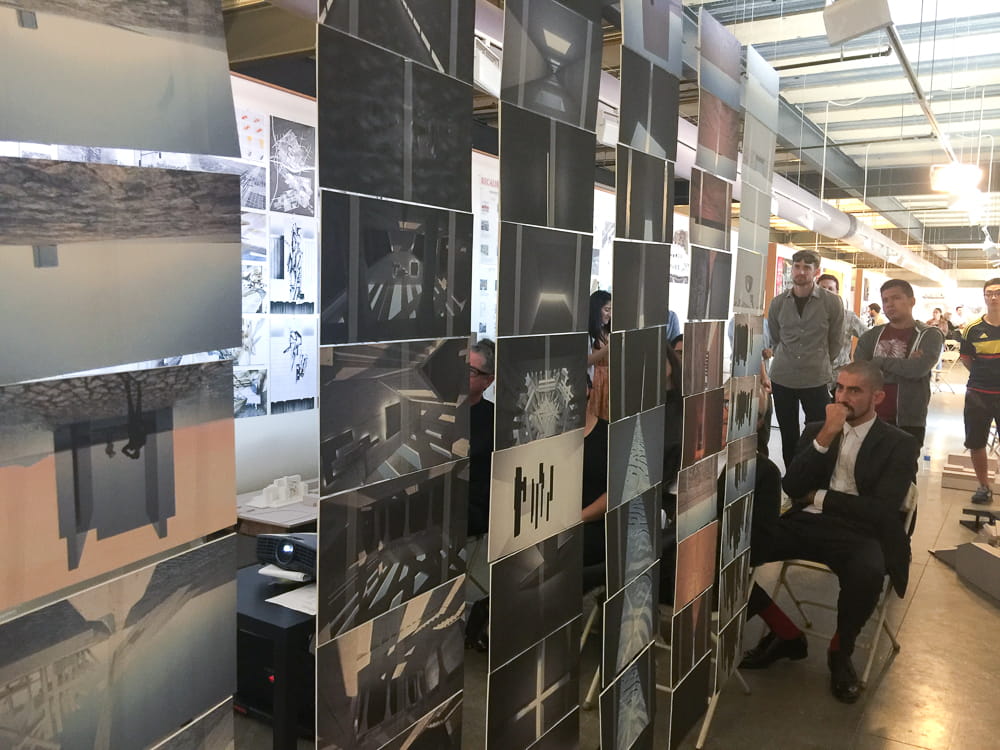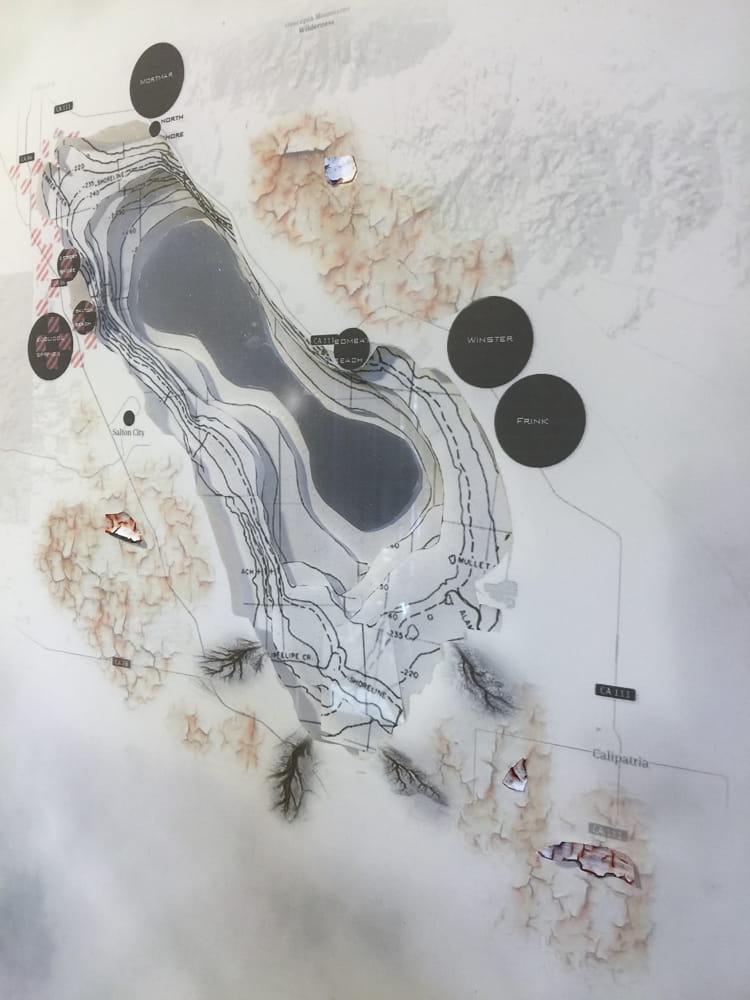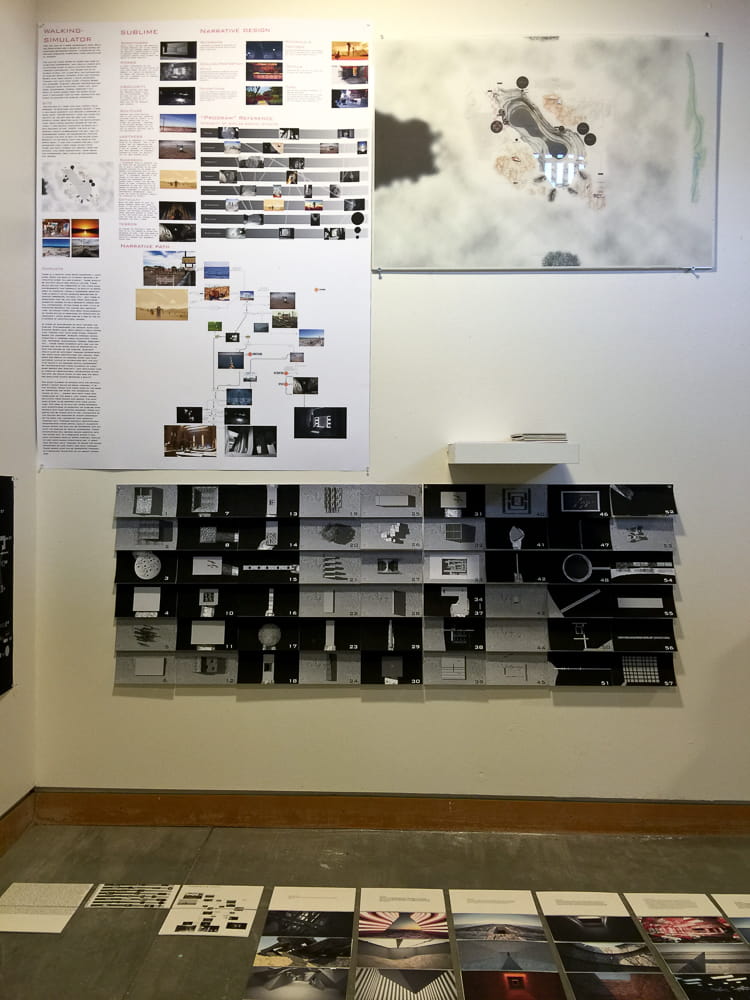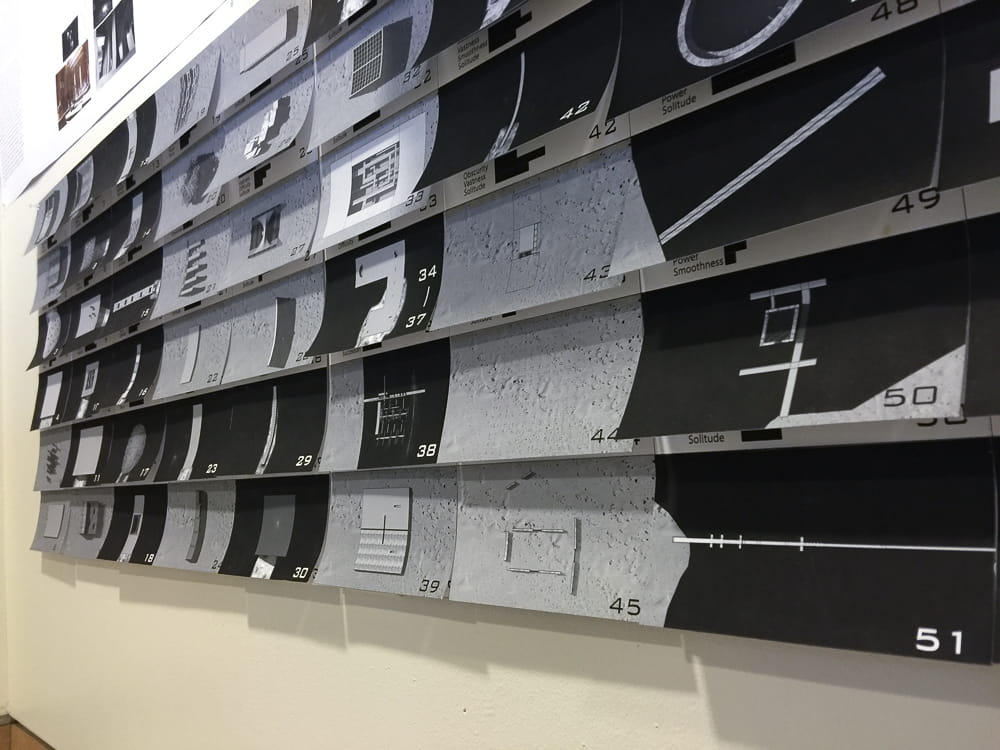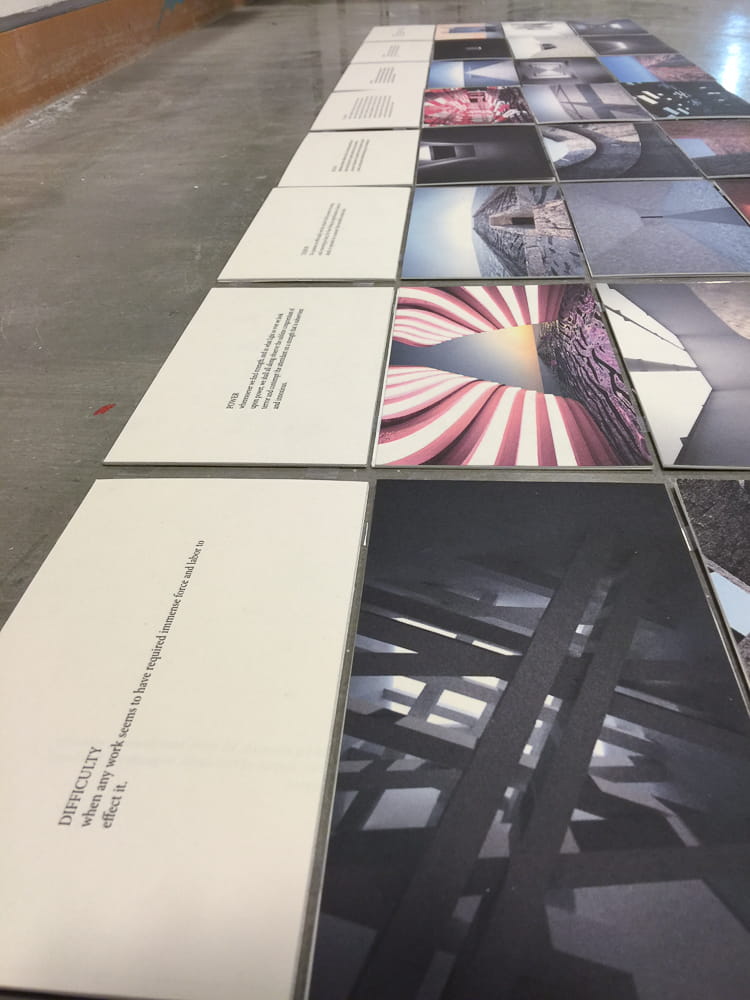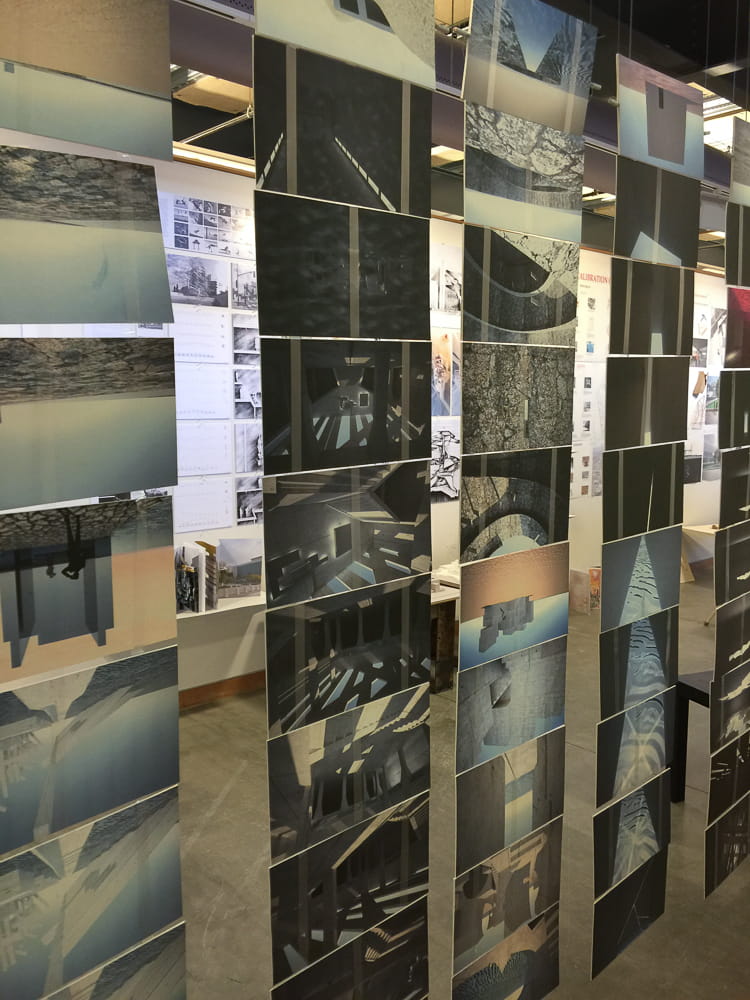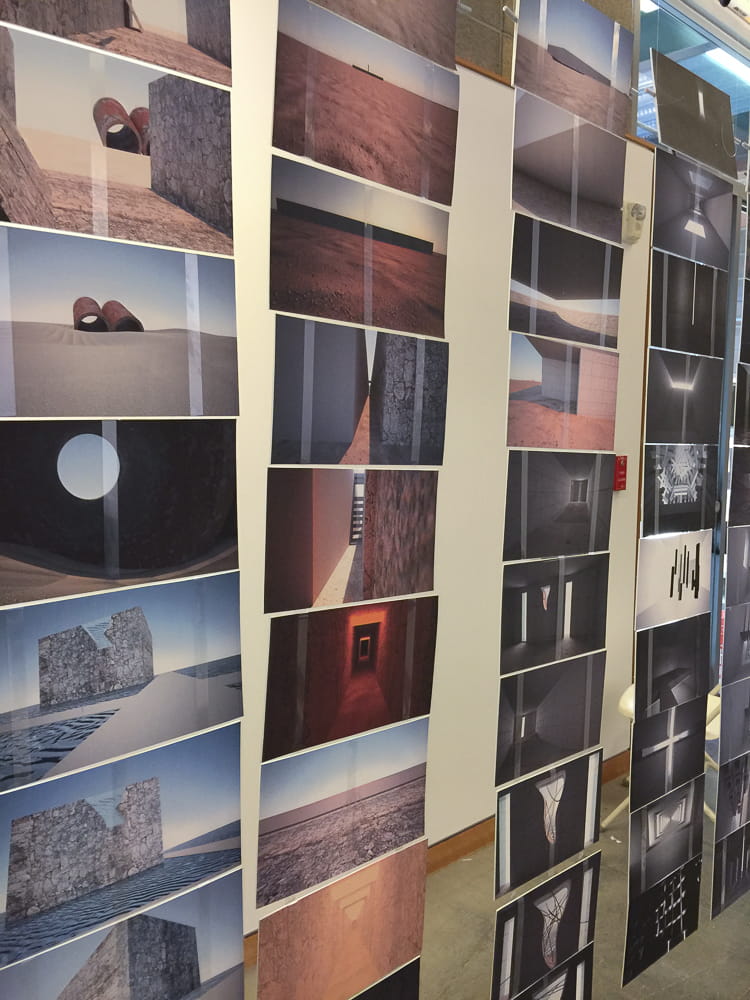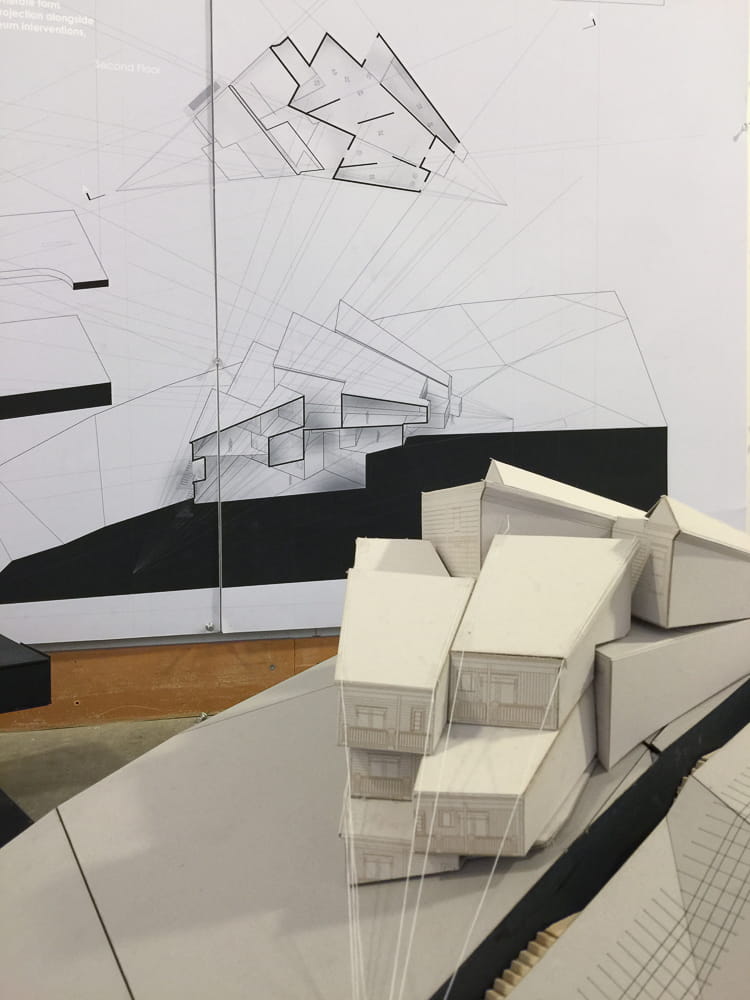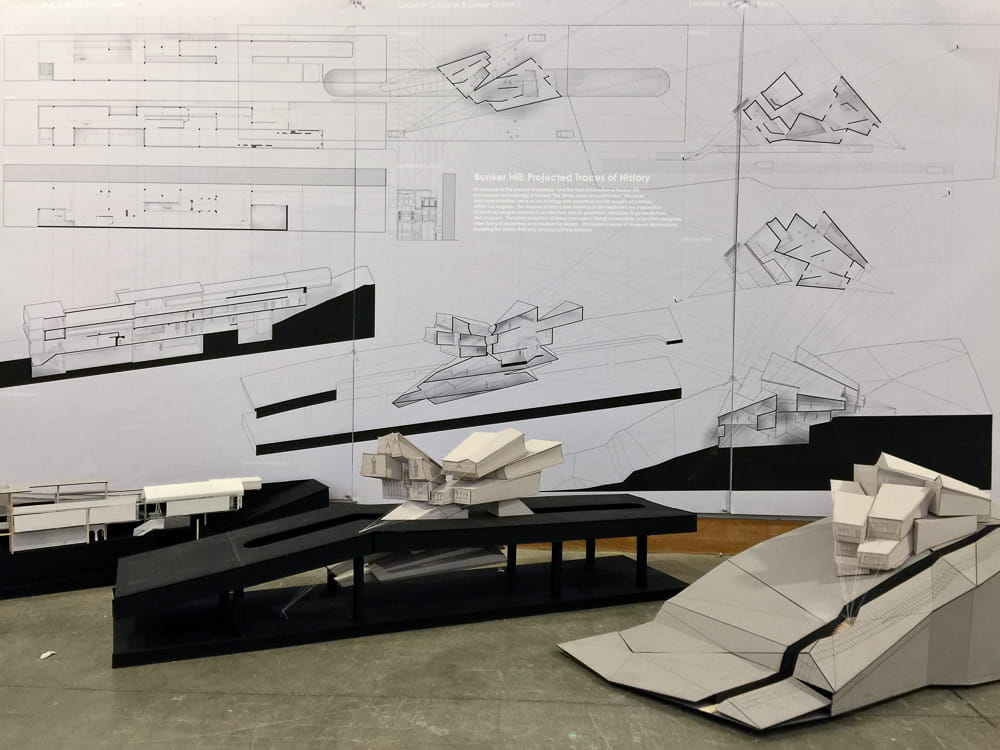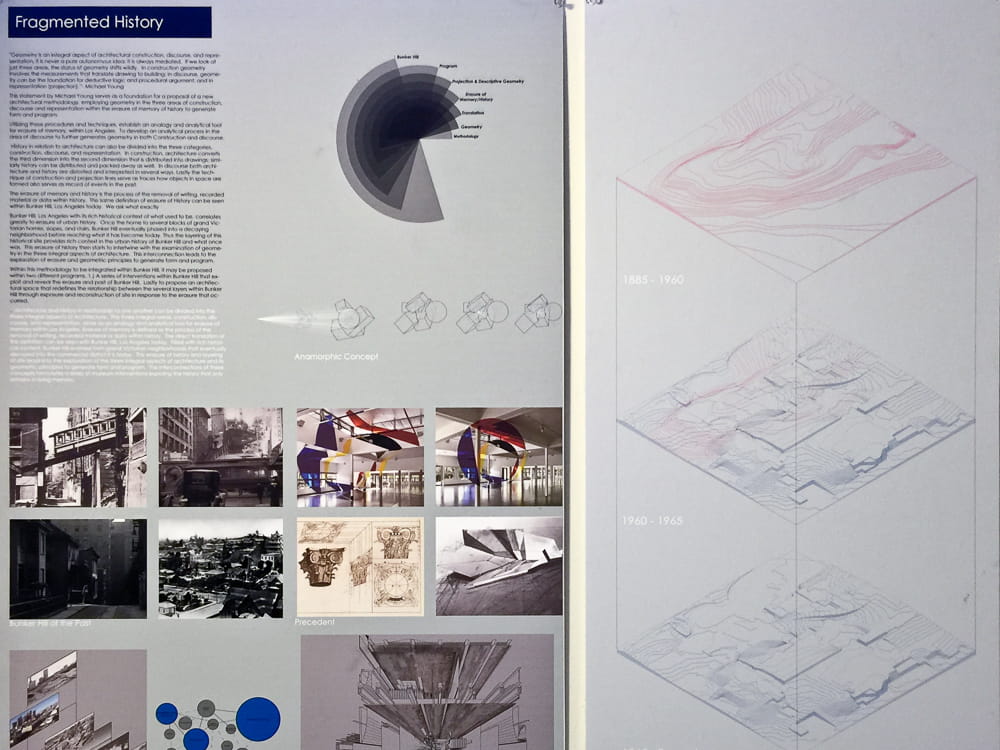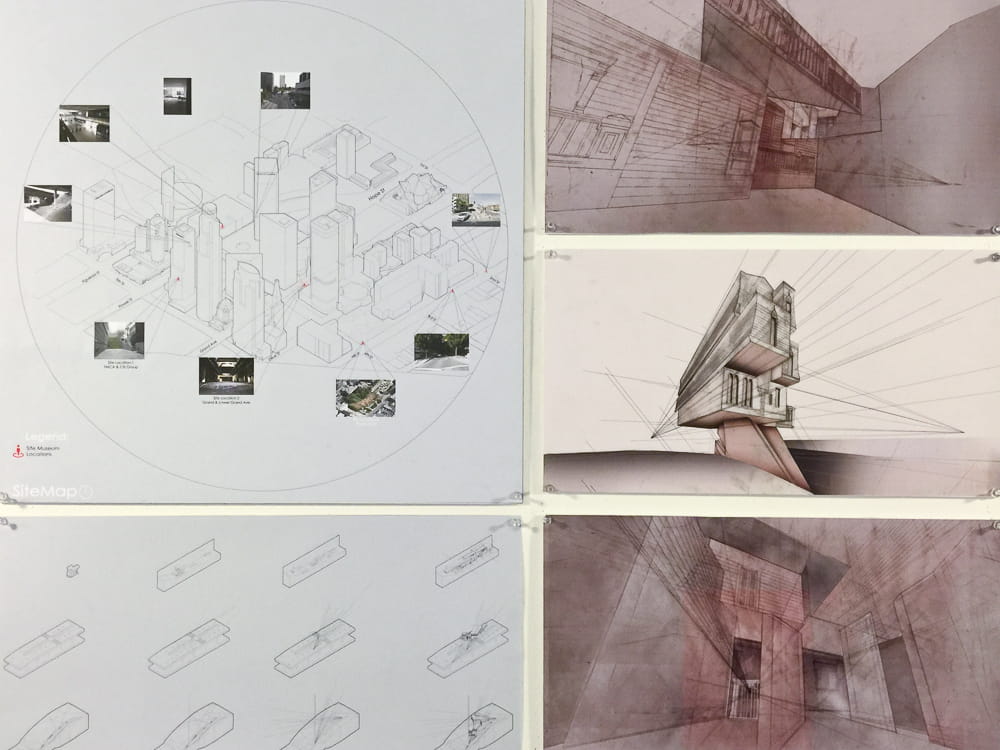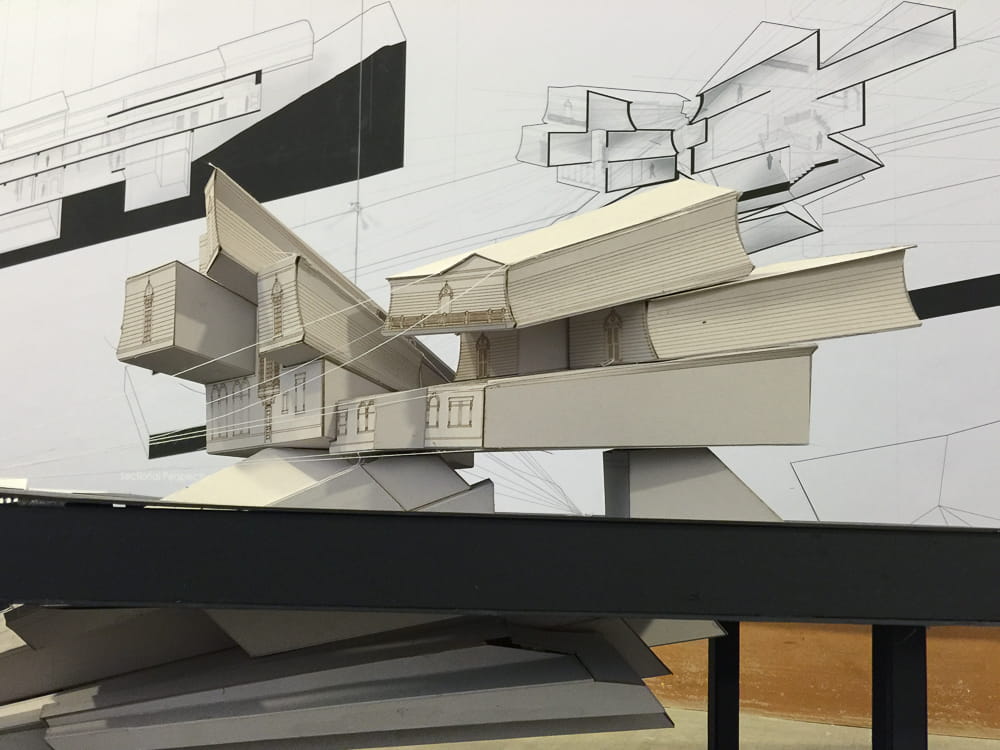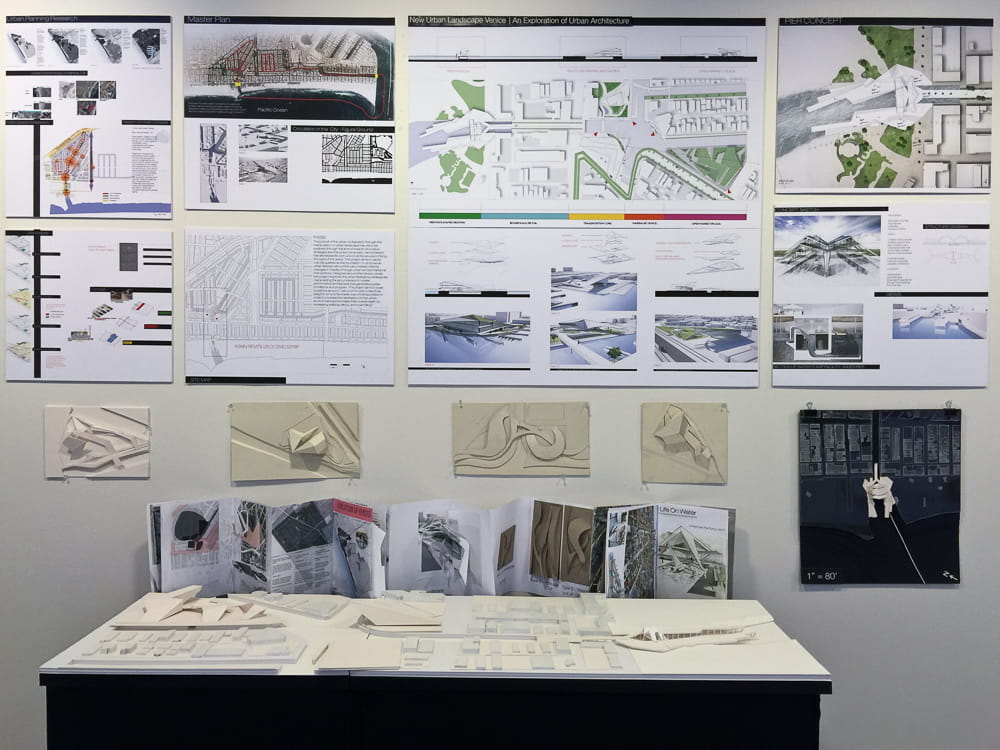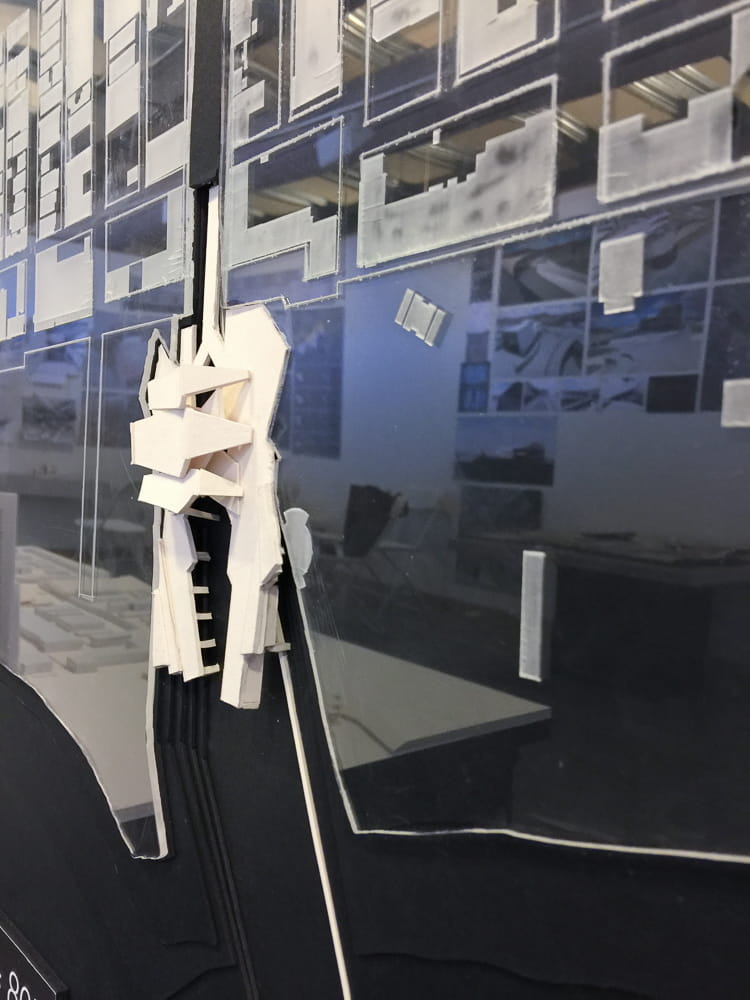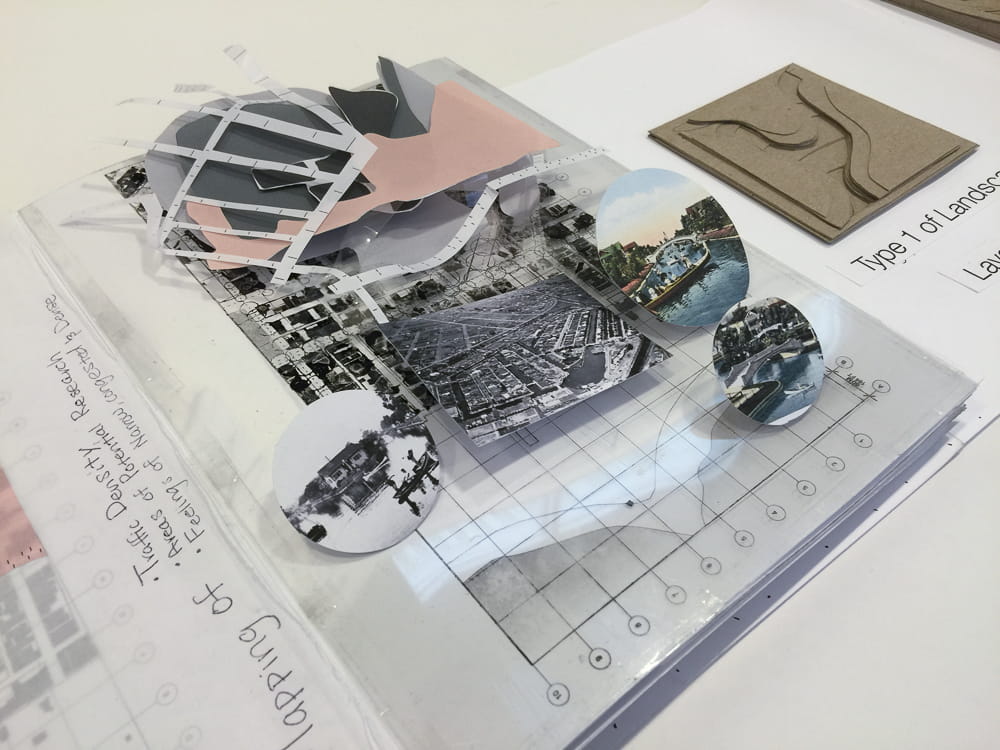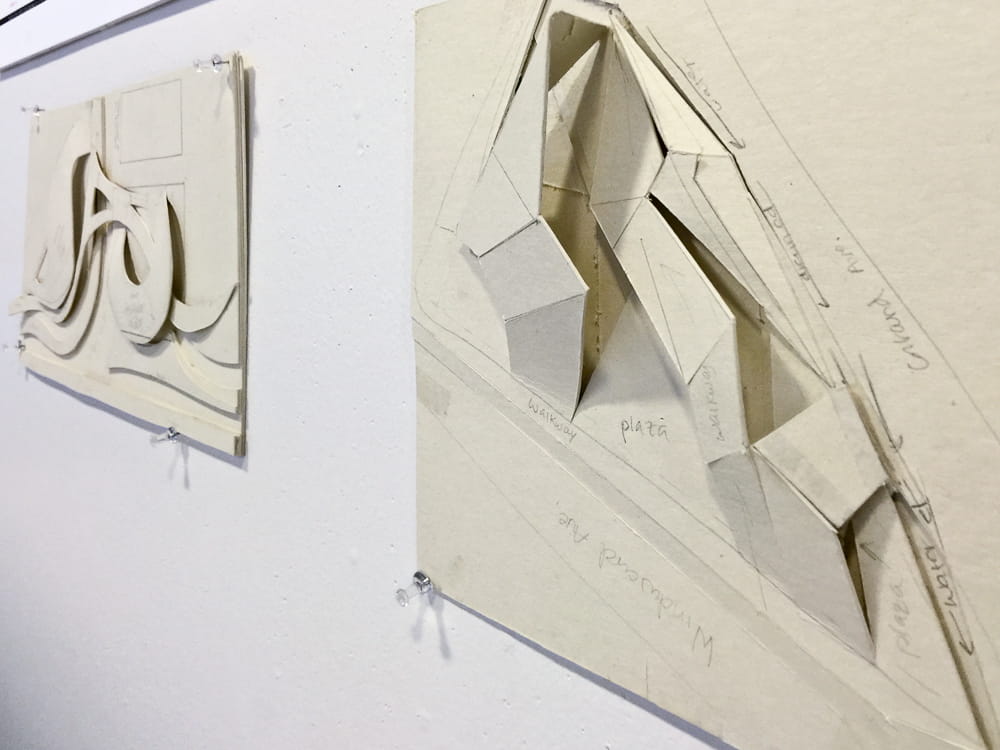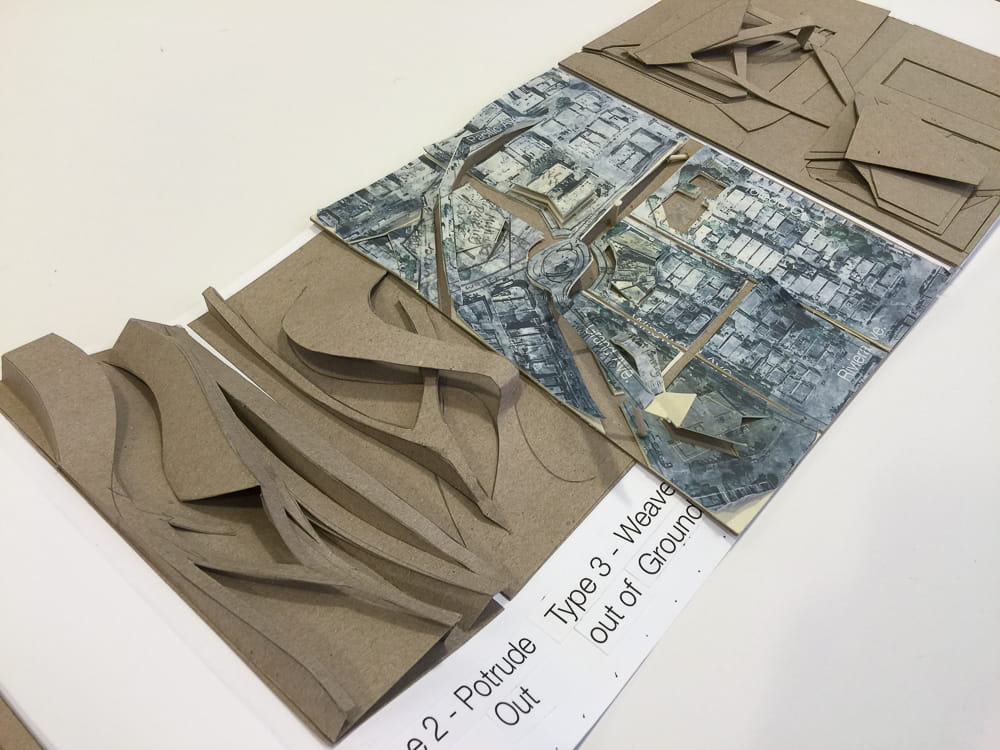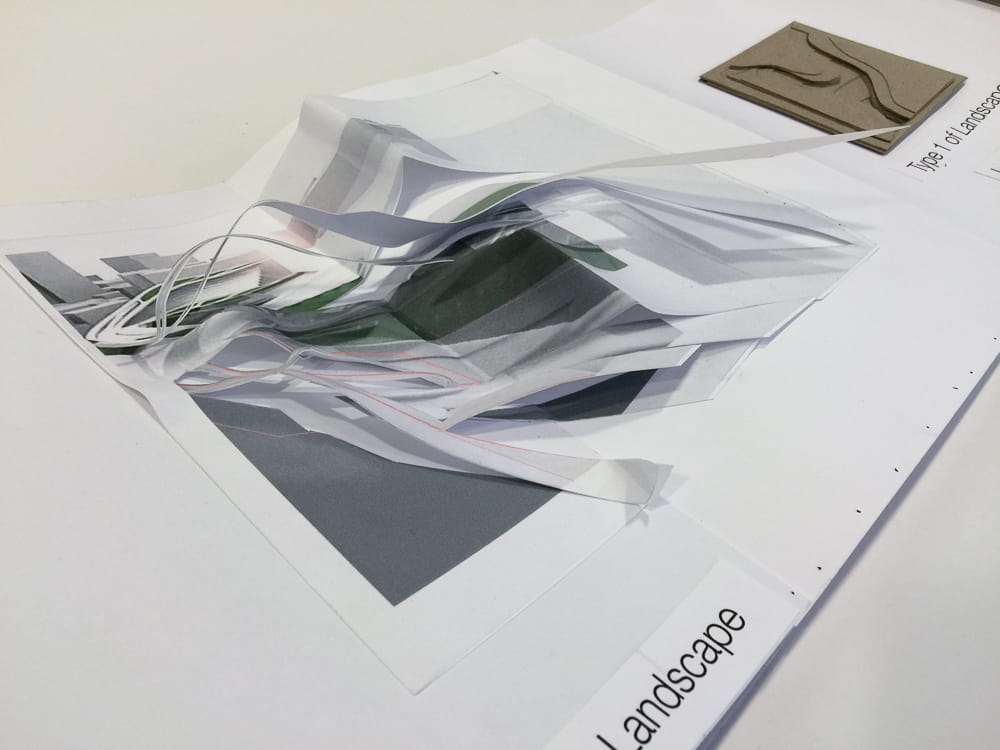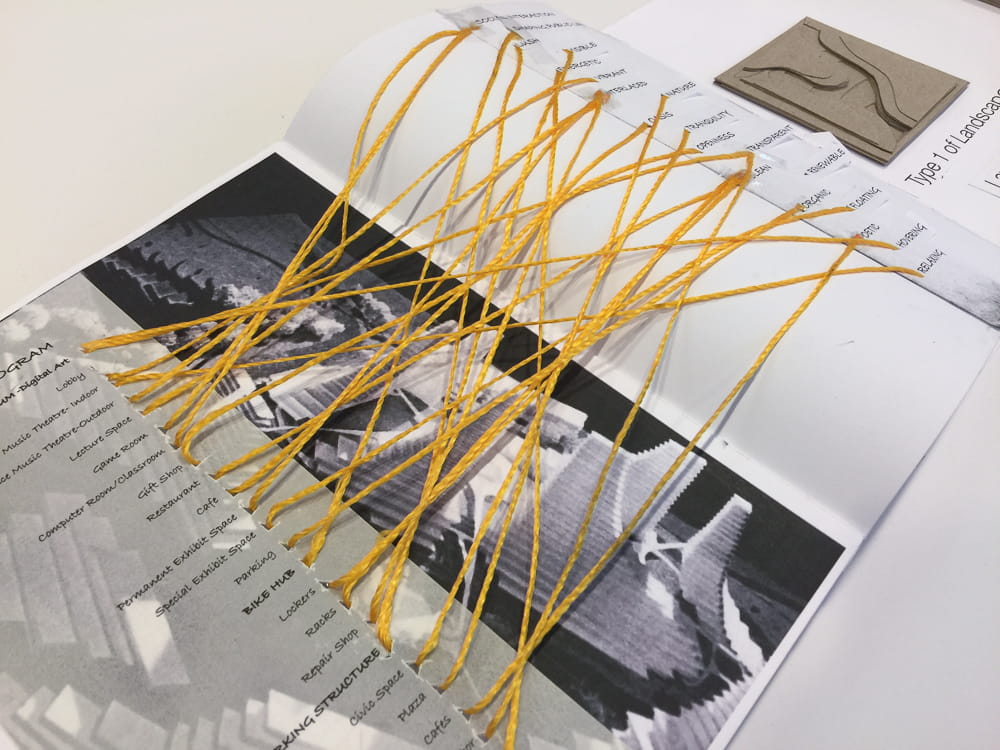(de)Laminating Space – Degree Projects 2016
Led by Yi-Hsiu Yeh and co-taught by Catherine Garrison, (de)Laminating Space was Part II of a year-long research studio for fifth-year undergraduate architecture students at Woodbury University. While the studio had an overarching operative approach, each of the sixteen students chose their own site and research topic, and determined their own building program. In other words, this was conducted as a thesis studio.
Studio Brief:
A Laminated Condition is a set of overlaid relationships where all forces and interests are collapsed, flattened, and coalesced into a whole or contained within a space. A Laminated Condition is also a type of simultaneous inhabitation that is present in most building sites and required in most building programs.
In the preparatory seminar preceding this studio, we began by looking at the architectural constraints, site context, modes of inhabitation, and the interplay of germane powers/forces/interests through the lens of Delamination. In Bernard Tschumi’s Manhattan Transcripts, architectural conditions were divided into Event, Space, and Movement. Instead of directly employing Tschumi’s strategy, we interrogated the concept that each of these three levels of reality is a readily visible facet of a problem that requires further delamination from within in order for latencies to be revealed.
Through delamination as a mode of operation, we continued to explore questions such as: Could great architecture be born without attempting to transcend contradictions or bring to a new synthesis between occupants? Could the idea of contradictions and harmony exist in the same building proposal? Could relational frameworks play a key role in driving the architectural form while fulfilling its functional and transcendental purpose?
In this final act, we will explicate those hidden frameworks of relationships into new sets of architectural requirements and re-laminate them into integral building and urban and social projects conceptually, programmatically, formally, technologically, and topologically.
Highlighted Projects in the Sequence of the project photos below:
In Architecture & Crime, Avedis Nalbandian studied the formation of isolated communities due to geological barriers (freeway, river, surface Metro etc.) and the cycle of isolation-led poverty, lost of educational resources, crime, and urban decay. To intervene in the all-too-often decay-to-gentrification process, his thesis invented a new development typology focused on crime prevention through architecture. Through manipulation of form, material, and site, the architecture established itself as a key component that facilitates Civic Engagement opportunities for the community to protect, inhabit, grow, and prevent crime.
In Re-L-ification, Lin Tseng explored the meaning of “Gestalt” – an organized whole that is perceived as more than the sum of its parts. Using perspective and anamorphosis techniques, Tseng created a hybrid worship place that embodied the spatial characteristics of churches, mosques, and temples in Christianity, Islam, and Judaism. The goal was to allow the congregation of each faith to instinctively see and feel only those motifs applicable to their own faith. The building was located at the Toyon Canyon Landfill in Griffith Park, adjacent to Forest Lawn Cemetery. Its multi-faith burial ground would facilitate each faith’s funeral procession from and to the building.
In Building Reality, Juan Hernandez critiqued the fake façade construction found throughout the United States, particularly in shopping malls utilizing EIFS cladding to mimic classical architectural components such as column capitals, cornices, and moldings. These fake façades are often the epiphany of disconnect with their interior programs and urban context. While creating a jarring fabricated reality, its users have grown desensitized to the disengagement from reality. The thesis invented a community program (child care and senior care) situated in the interstitial space between the Americana Mall and the Glendale Galleria. The intervention caused a rupture at the boundary of the fabricated reality, offering the shoppers an opportunity to interact with the ultimate reality.
In the Last Room, Saten Mkrtchian embarked on her search for architecture’s role in non-verbal intelligence. After concentrated research on Edward Hall’s proxemics, she combined Hall’s social science and phenomenology to form functional and poetic spaces for the proposed program. Her thesis proposed a mourning room complex within a new progressive cemetery campus (see Ling Tseng) on the landfill site in Griffith Park, adjacent to the Forest Lawn Cemetery. Each mourning room held an extended viewing of the deceased after the religious service and before the burial or cremation. The goal was to design a collection of rooms whose architecture actively facilitates the grieving process, during which non-verbal communication is expected.
In Wind-Versity, Eric Ho Yin Lai turned a long-time fascination with wind, “which occupies the space absence of built structures,” he said, into a research project. This inversed or figure-ground relationship between wind and architecture sparked a thesis whose resulting architecture form and programs centered on passive ventilation, community bridging/building, and community advertising through an invisible means.
Lai identified Frogtown as his operating ground. Located at the bottom of Elysian Valley, Frogtown is on two sides of the Los Angeles River, bound by the 2 Freeway at the north and 110 at the south. The natural and man-made barriers made Frongtown unwillingly gated, divided, and invisible. A bridge building uniting the community divided by the river was essential. The primary program was a bakery and a cafe that not only provided low-skill jobs for the locals, but the chimney effect from the bottom of the Elysian Valley carried the comforting smell of bread making out to the surrounding neighborhoods, breaking Frogtown’s physical boundary.
In Tween Sports Center, Jung Mi Kim investigated the concept of animation, tweening, and frames and invented an expanded sports medicine program that rescued a historical building from its death sentence. The adaptive reuse project was inside the original LA General Medical Center, a 146-year-old structure originally constructed as a monument to modern medicine. While currently standing as a so-called historical monument, after handing its title to the new LAC USC Medical Center in 2008, the hospital building only serves as a non-profit wellness center and equipment storage. While the building appears to be a concrete frame structure, the record documents reveal a heavy steel frame. The idea was to insert new frames of program components: rehabilitation center, research lab, mechanics, and sports (martial arts, slacklining, parkour, and gymnastics). By tweening within the new frames, unseen transformative spaces were expressed outwardly and within its atrium by mechanized systems that change positions according to the athletes’ actions.
In Holacracy – Subverting Panopticon, Vardan Kasemyan proposed a prisoner education facility in the historical (and controversial) Chaves Ravine, currently part of the Elysian Park. Holacracy is Kasemyan’s proposed way of running the prison, which removes the power from a single point. This method contrasts Panopticon, an 18th-century prison typology where all inmates are to be observed by a single watchman without the inmates knowing whether they are being watched. To mirror the adjacent Dodger Stadium but to subvert the concept of a panopticon, he proposes a donut-shaped building. Kasemyan’s final presentation comprises lined drawings laser-etched on the backside of the acrylic. When pressed against the black background, his presentation boards reflected the jury’s faces like a one-way mirror, and his drawings refused to be examined. However, the highly satirical project is not without thoughtful resolutions. In his building, programs, security, and circulation are strategically separated with ramped level changes, and the building is elevated to give the space below back to the park while providing extensive sightlines to the free world from the facility. Los Angeles County Jails, with an average daily population nearing 22,000, is the largest jail system in the world and one of the most troubled in the U.S. It’s important to mention that the Chaves Ravine is also the home of the Los Angeles Police Academy.
In Skid Row’s Transient Beacon, Thien Nguyen proposed a high-density, high-rise solution to address Los Angeles’ growing homeless crisis. The upper floors of the tower are dedicated to traditional homeless services, including housing, meals, mental and physical healthcare, and social services. These residential floors offer a range of room types, from large communal sleeping spaces to single-room occupancy units (SROs), tailored to residents’ mental and physical stability, as well as their needs for supervision and assistance. The lower floors feature a commerce-based social framework designed for residents who choose to work, gradually proving their reliability and earning financial independence as they transition back into society. The commercial spaces include annexes of nearby businesses, such as those from the adjacent Flower Market, offering low-skill yet potentially therapeutic tasks and opportunities for social interaction. The tower and its programs are designed to improve the retention rates of transitional housing and increase the success of reintegrating its residents into society.
Note that more projects are shown, but due to the length of text on this website, only half of the projects are introduced here. However, appreciation and applause to all students in this studio for their diligence and hard work and the incredible thesis projects. The entire studio includes Mauricio Pensamiento, Vardan Kasemyan, Saten Mkrtchian, Eric, Ho Yin Lai, Celine Khashadoori, Avedis Nalbandian, Thien Nguyen, Crystal Chan, Peter Flores, Juan Hernandez, Ariel Souza, Samuel Lewis, Ling Tseng, Tigran Parsamyan, Jung Mi Kim.


